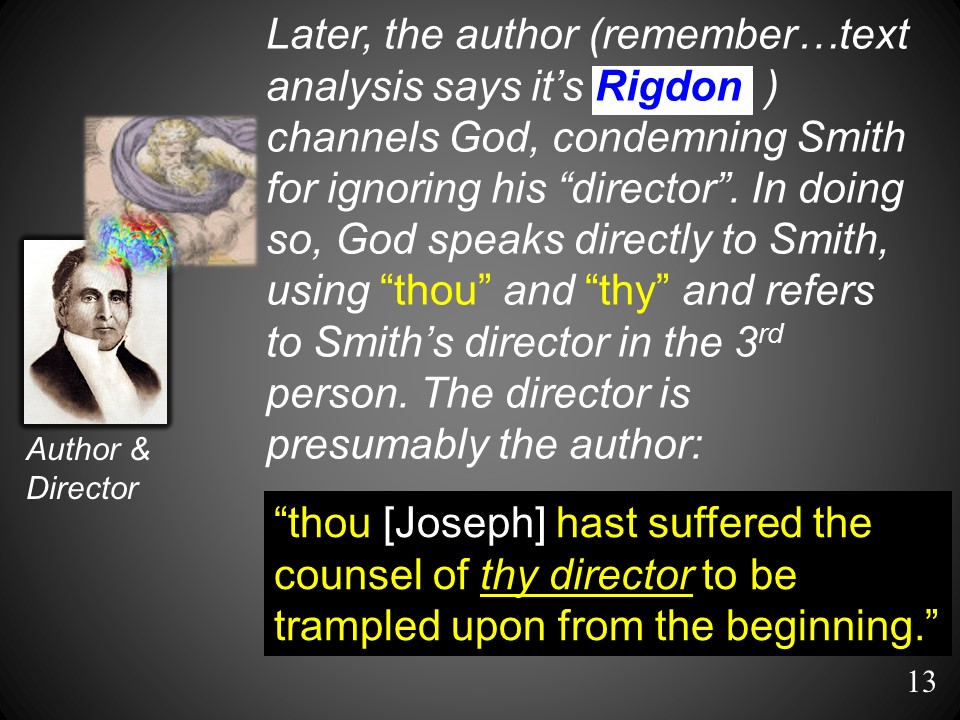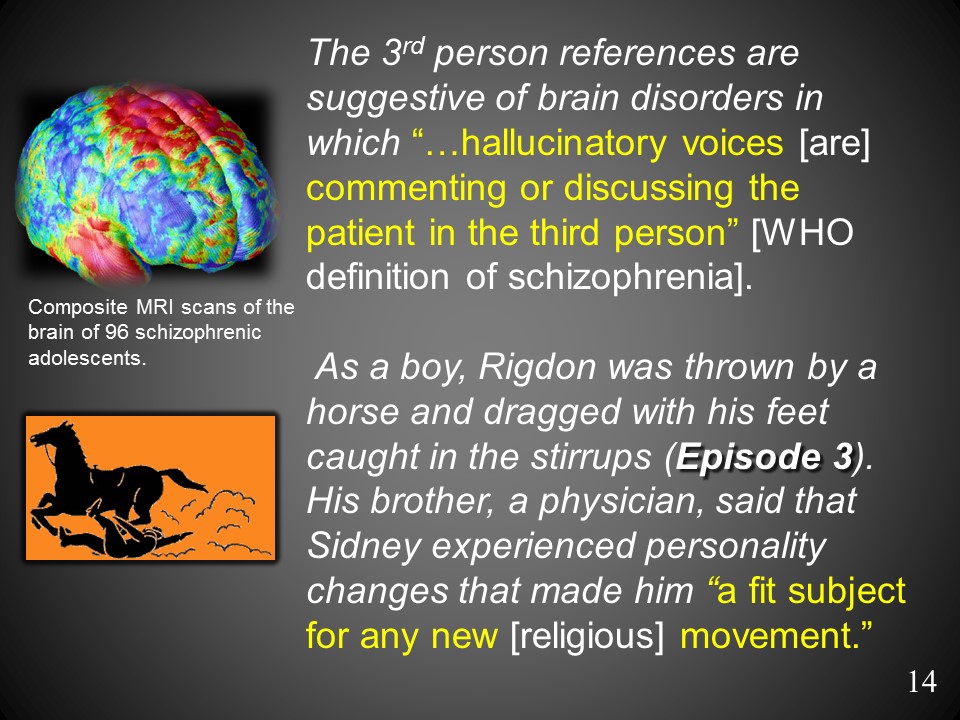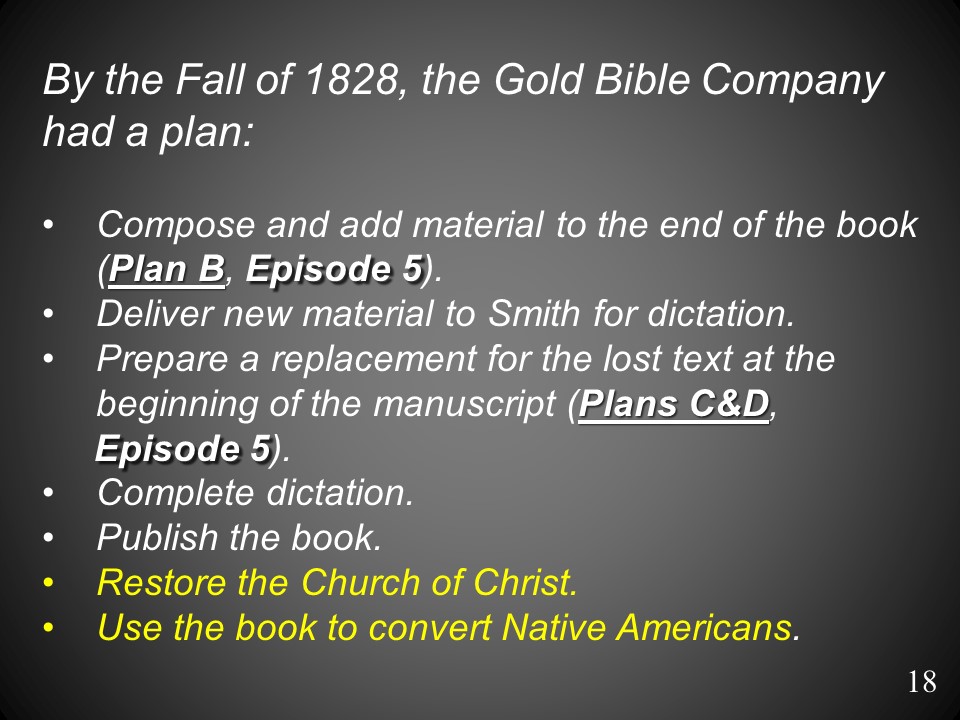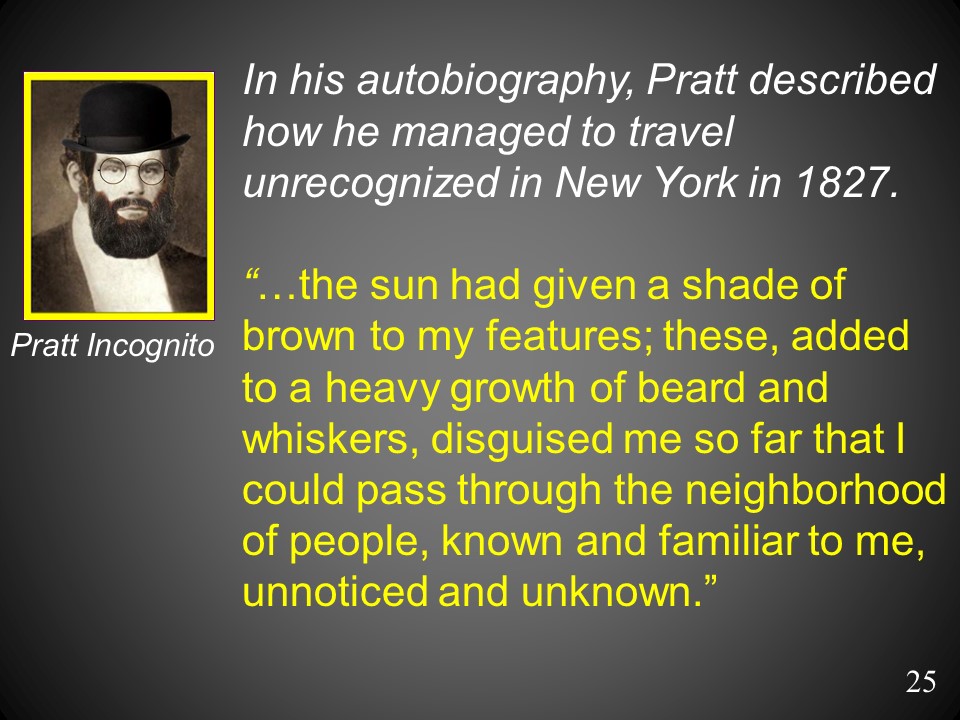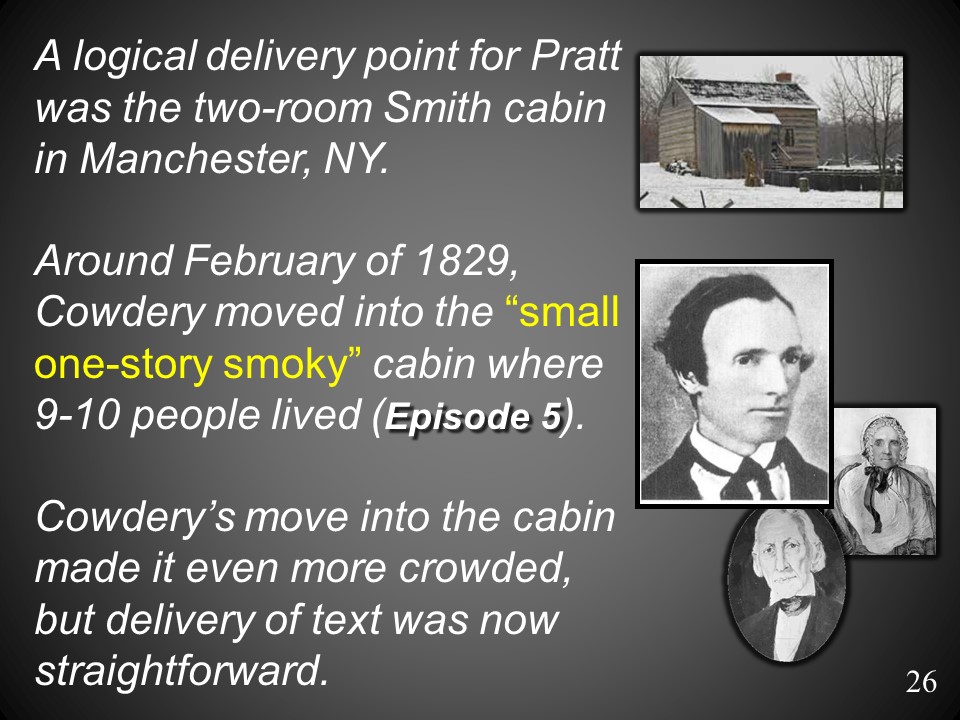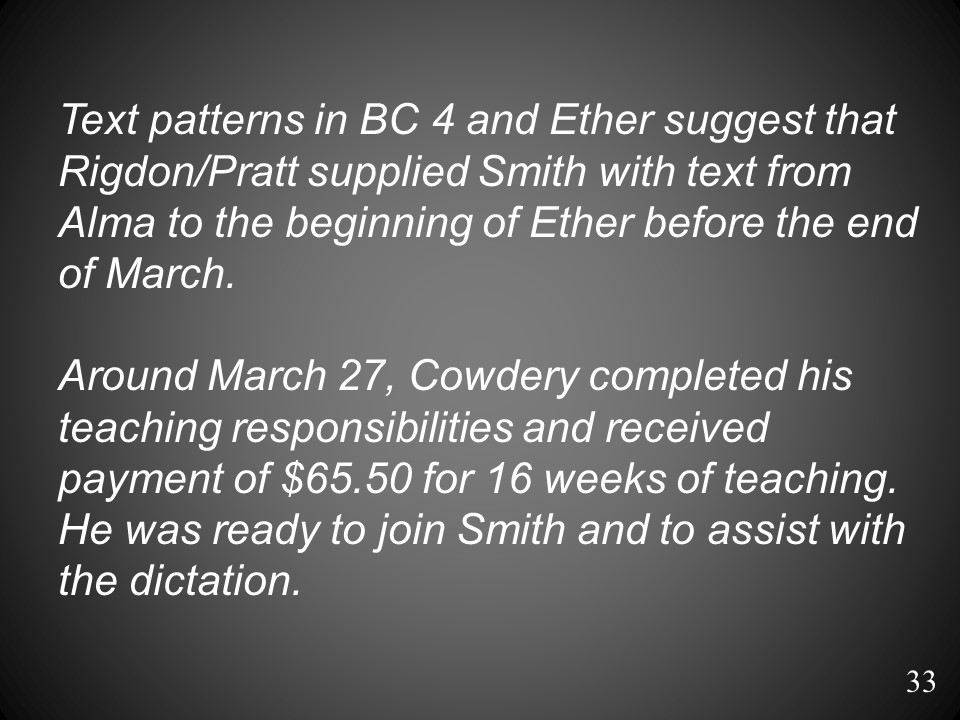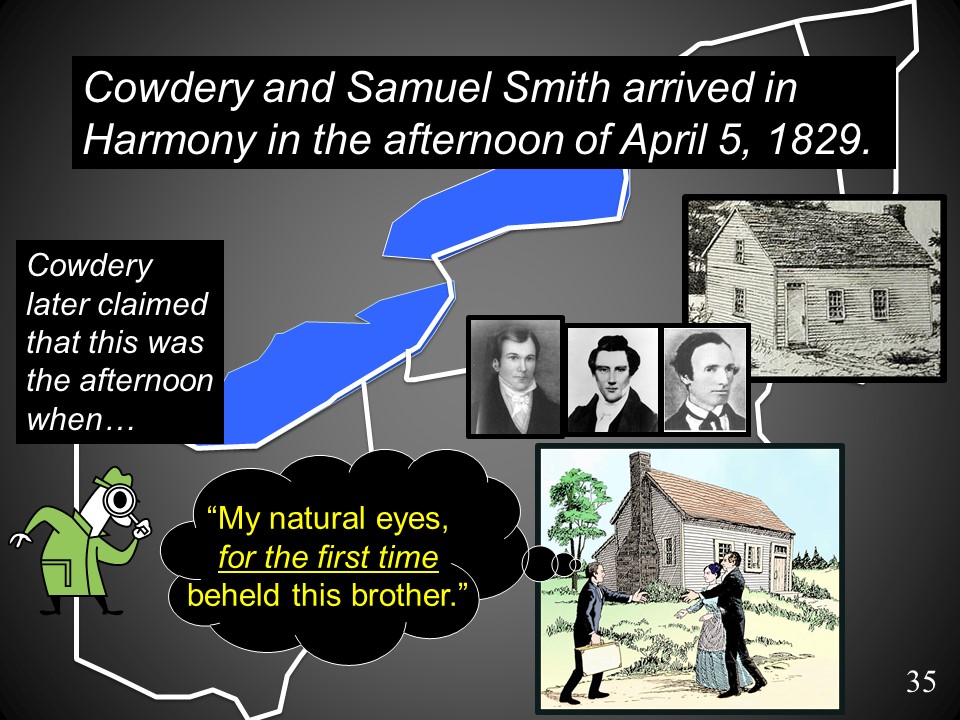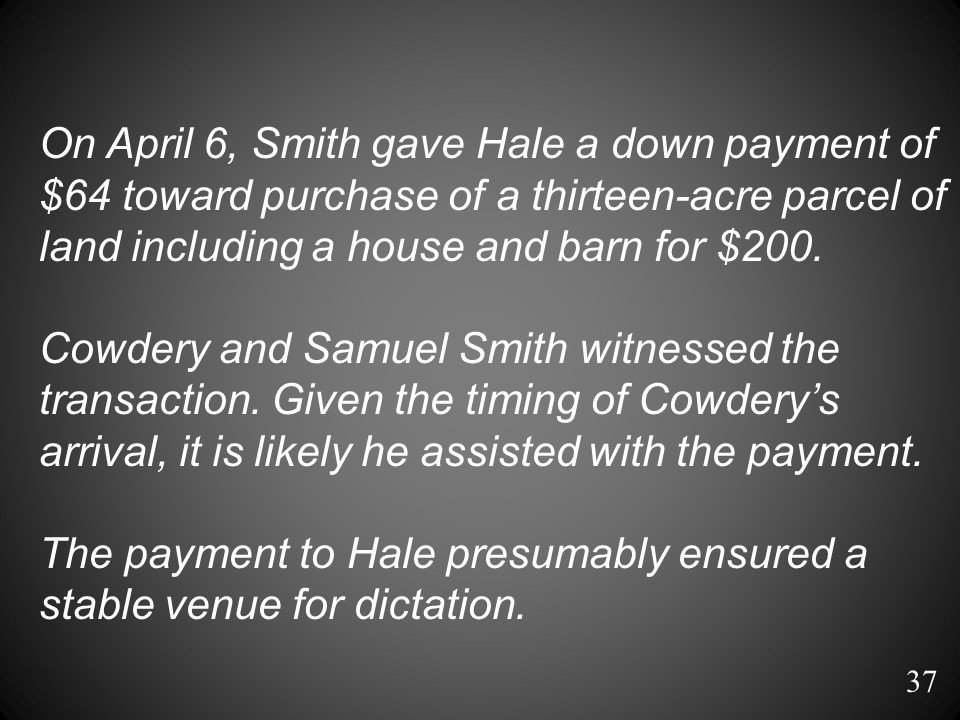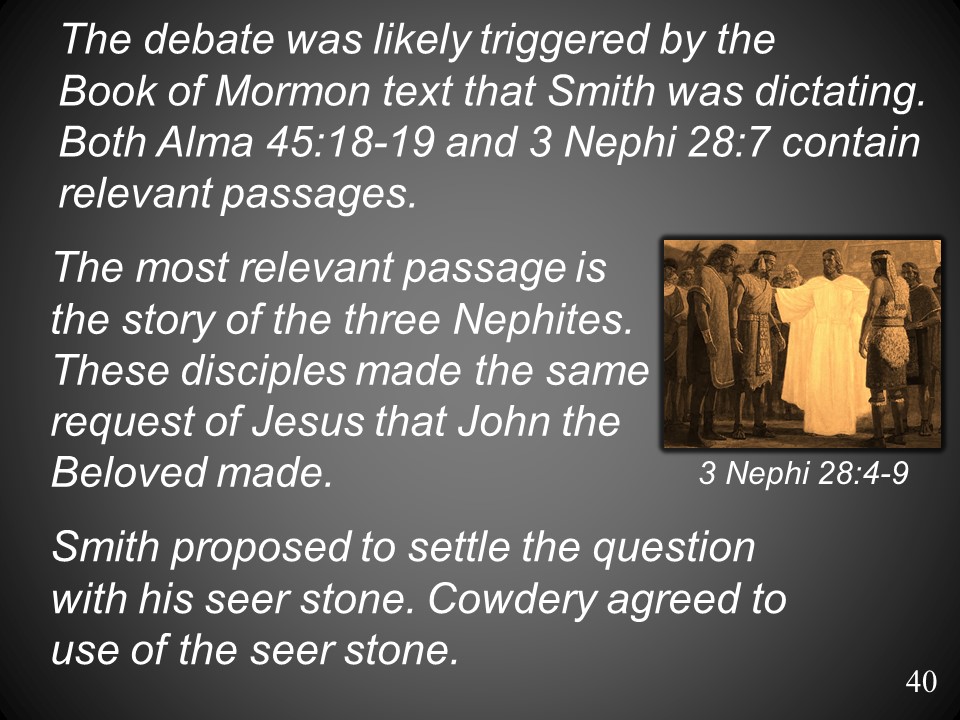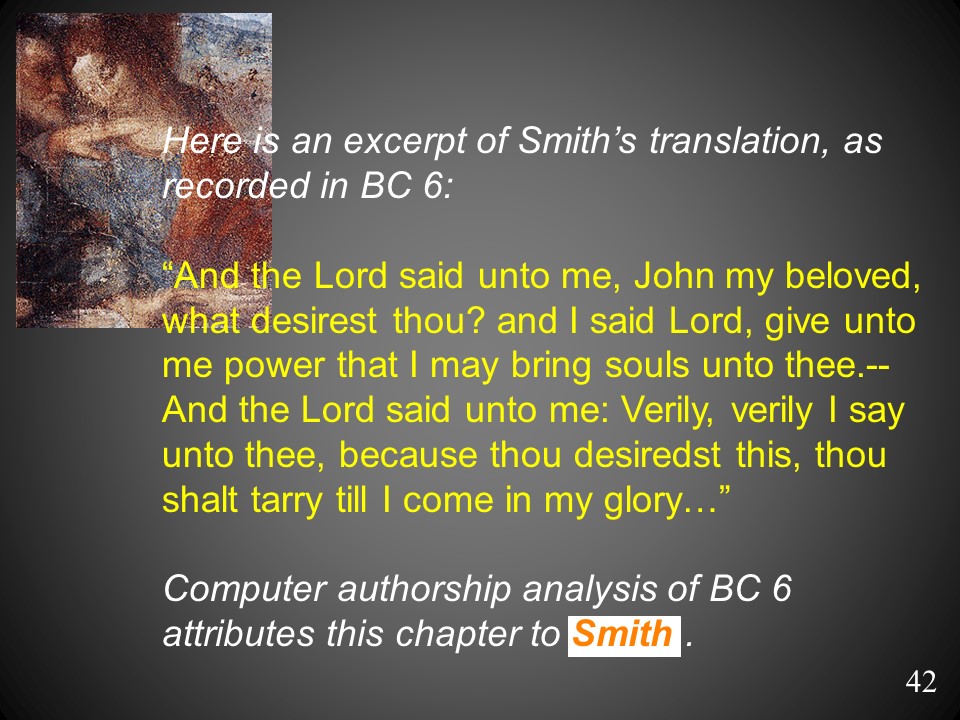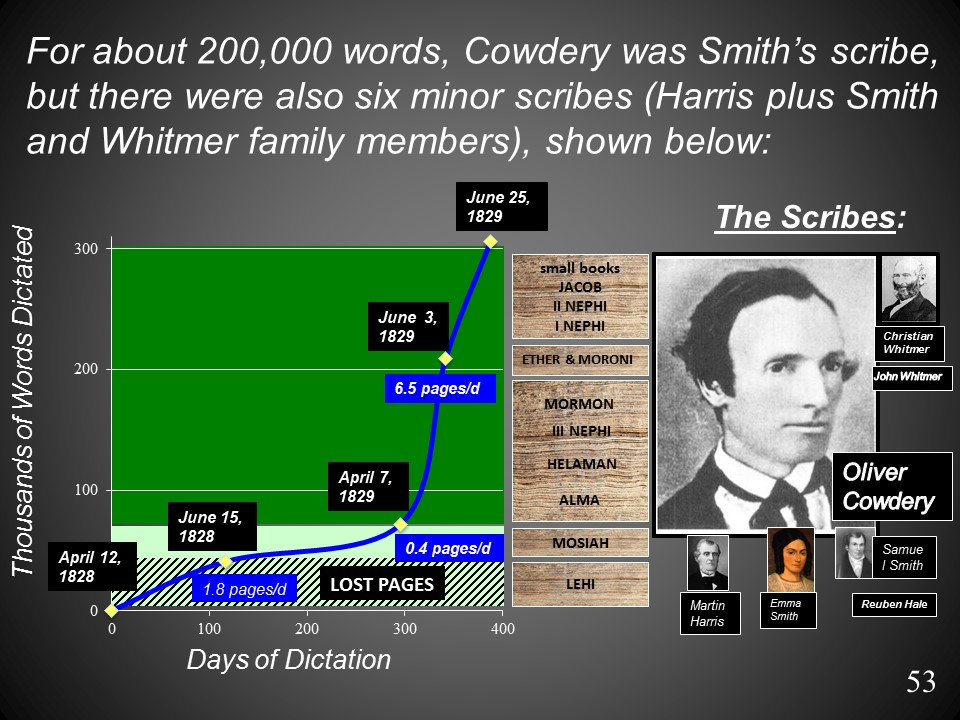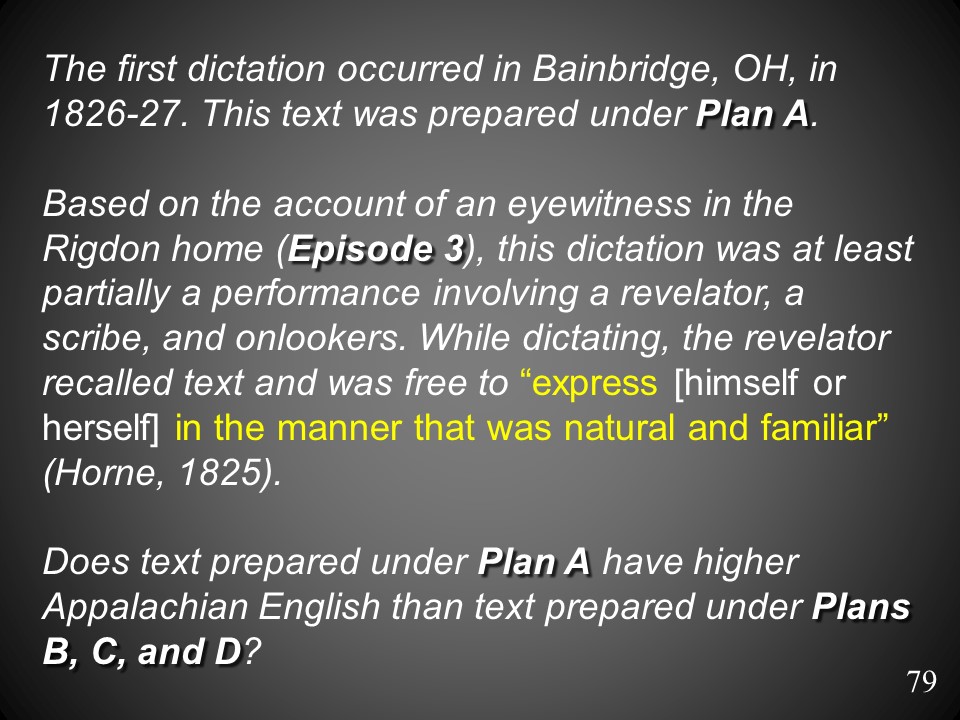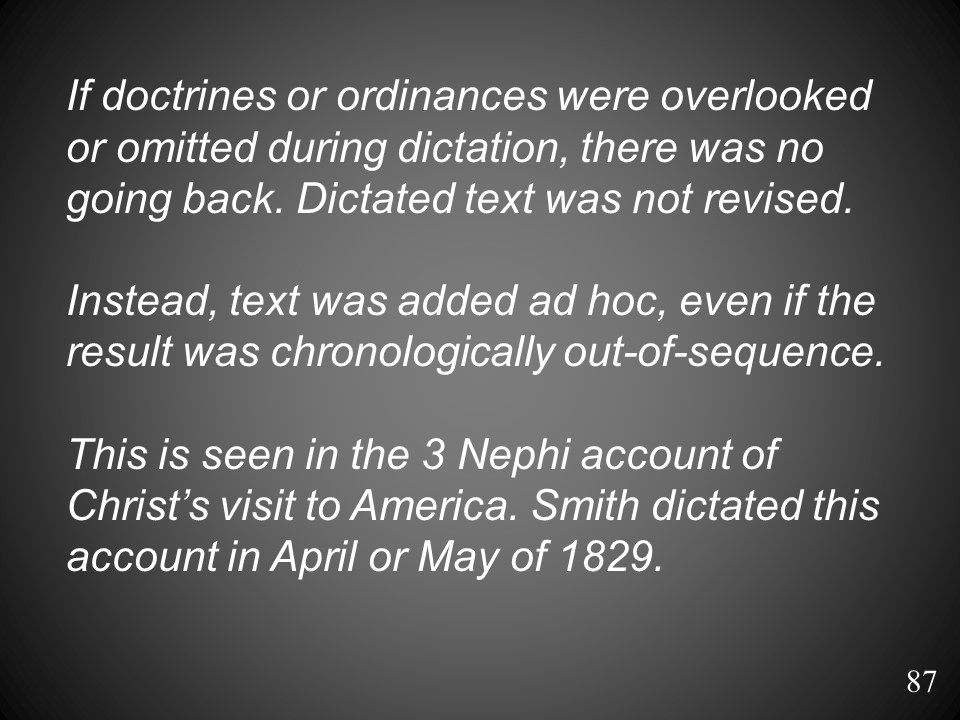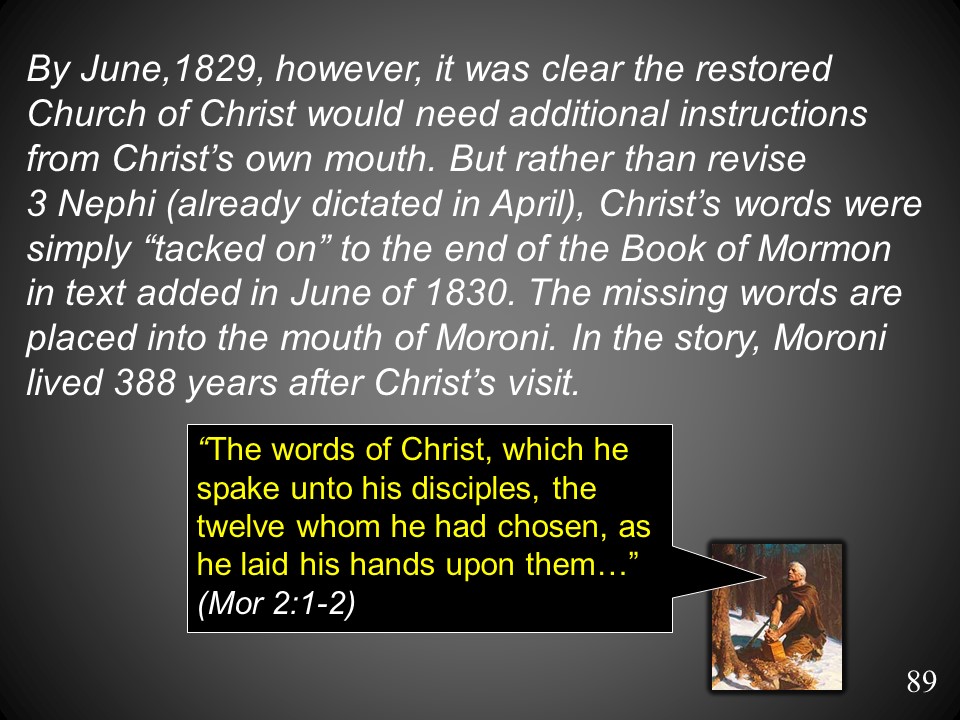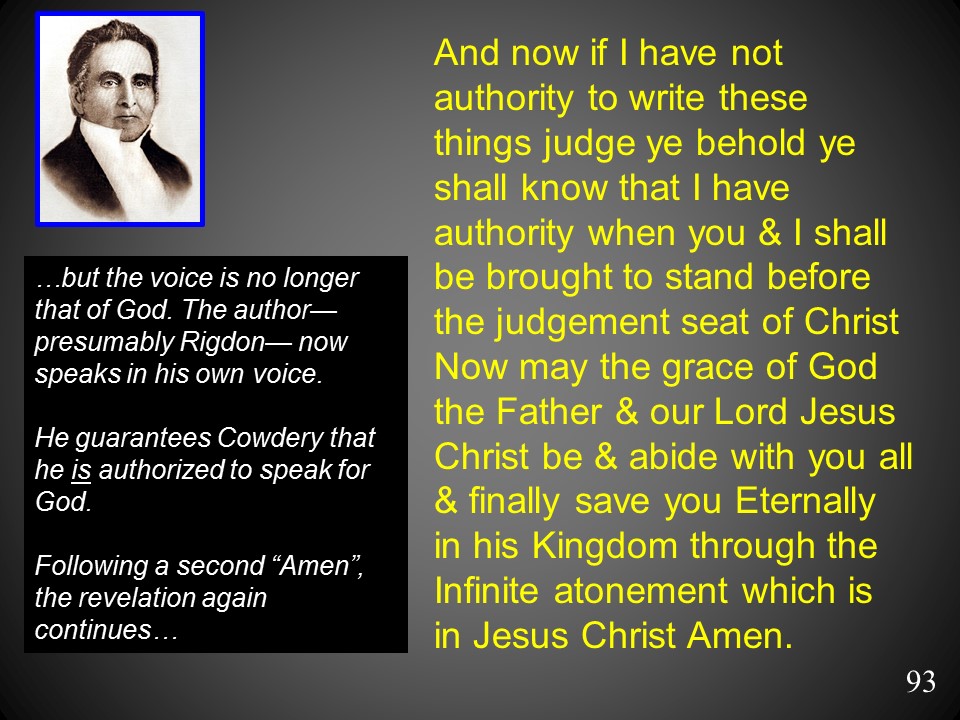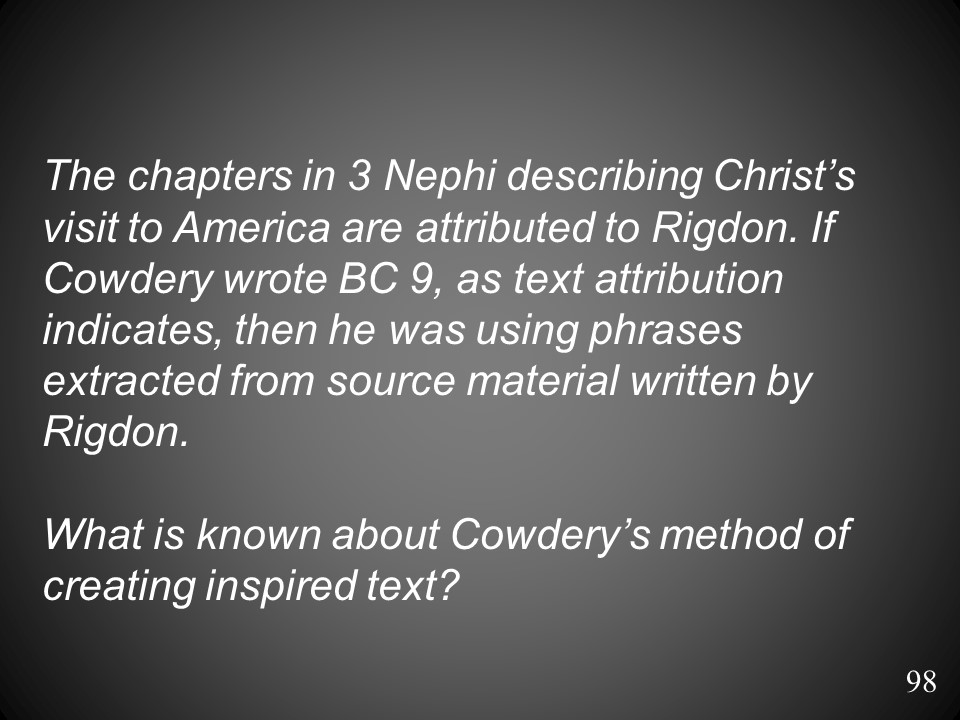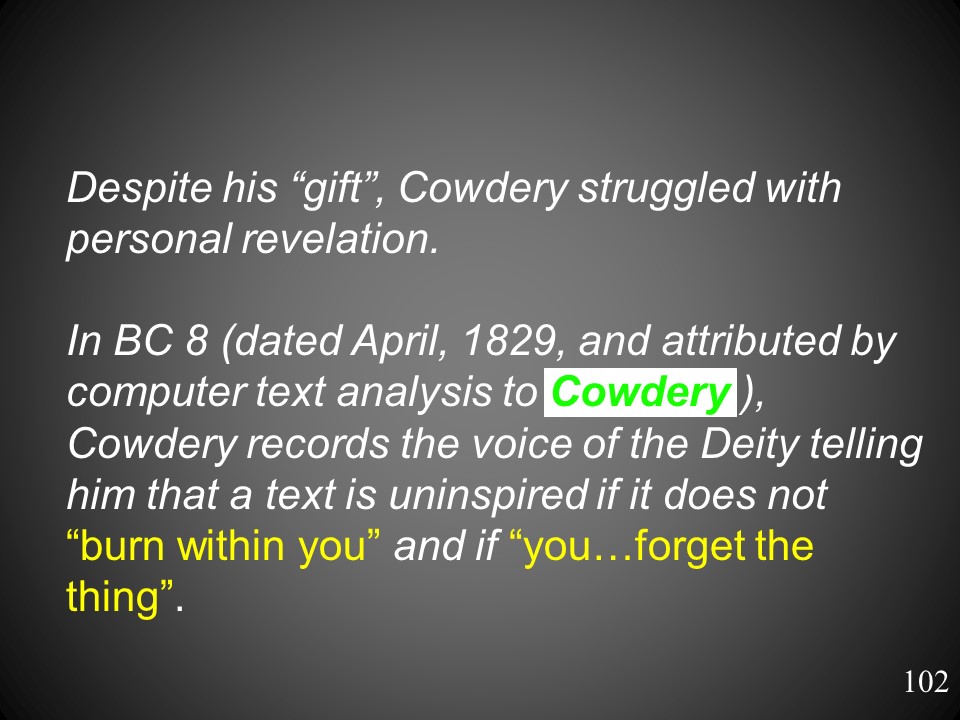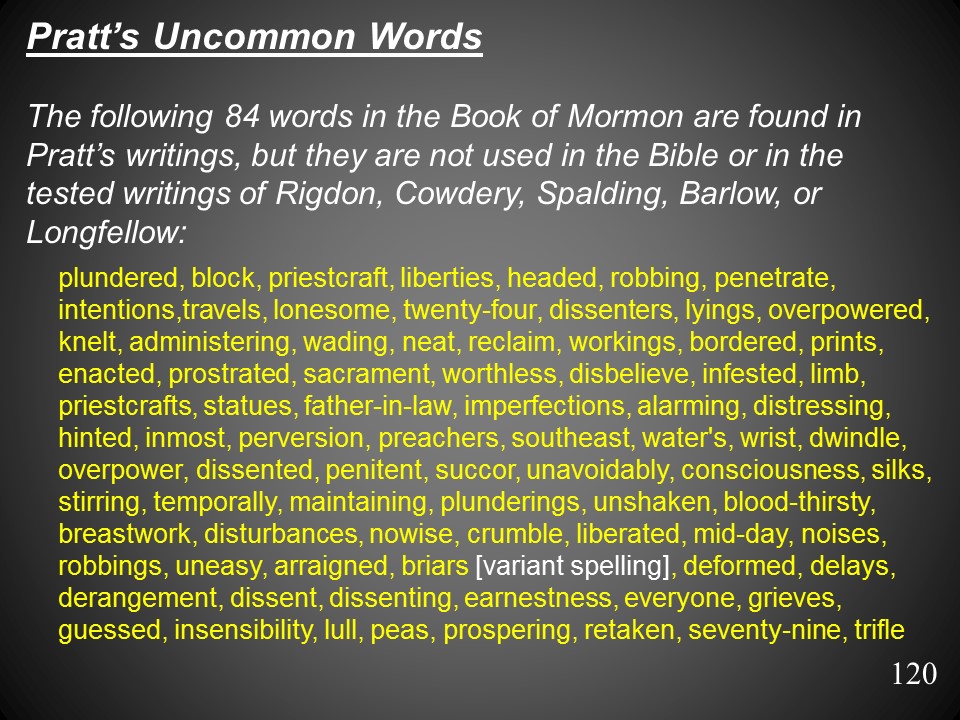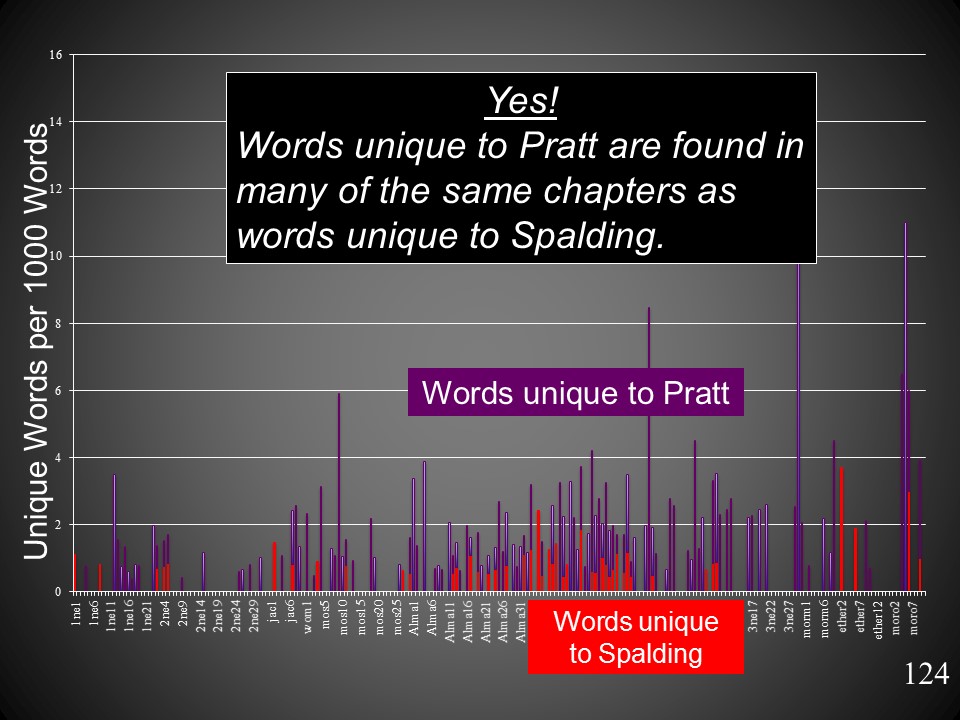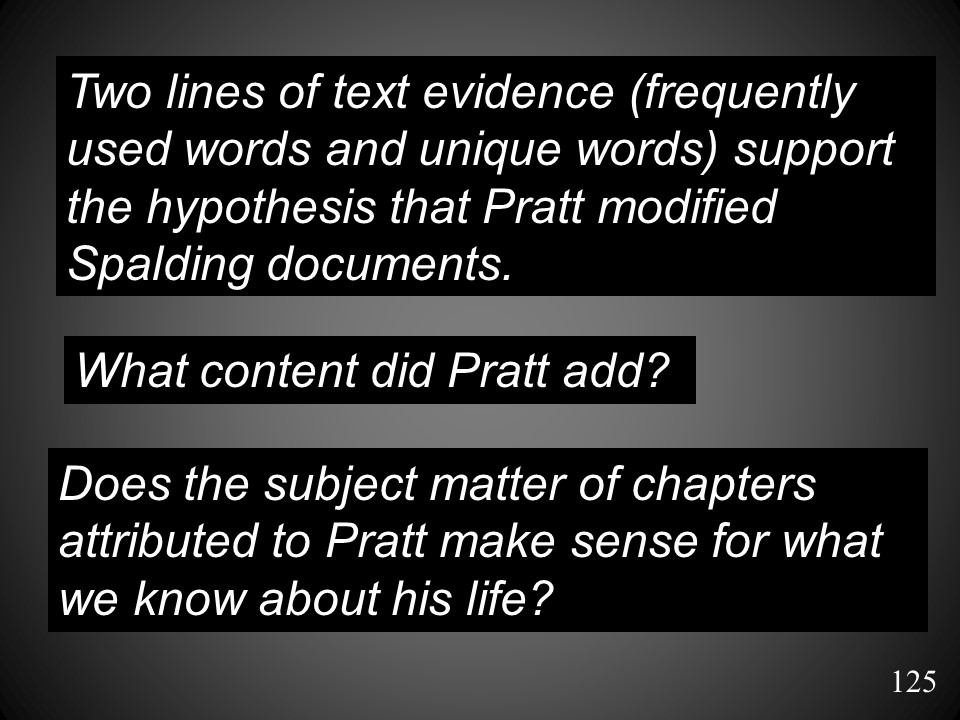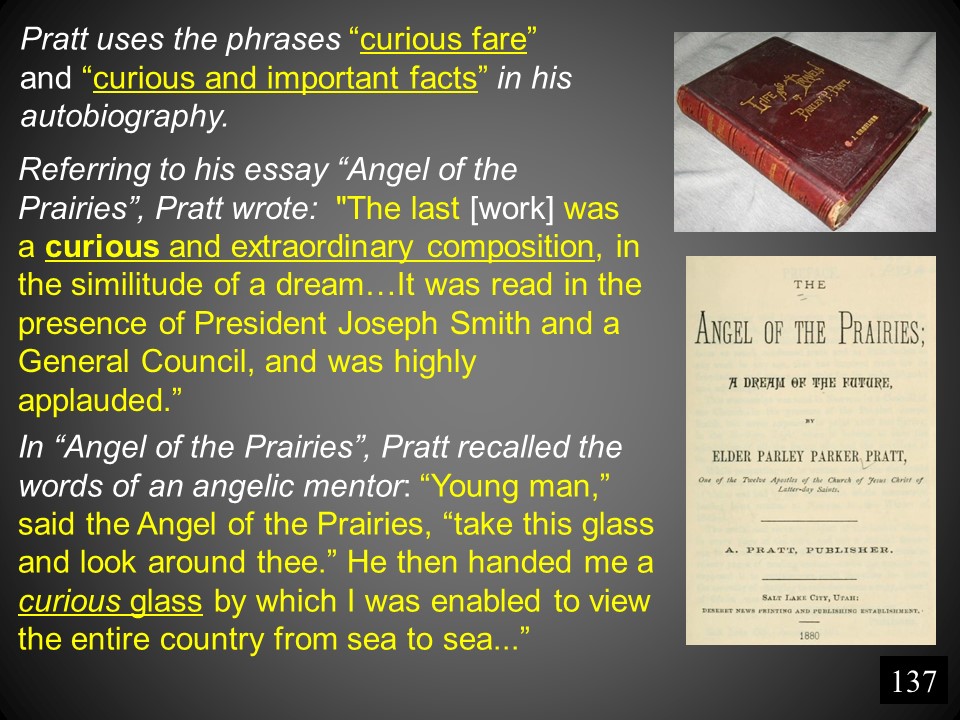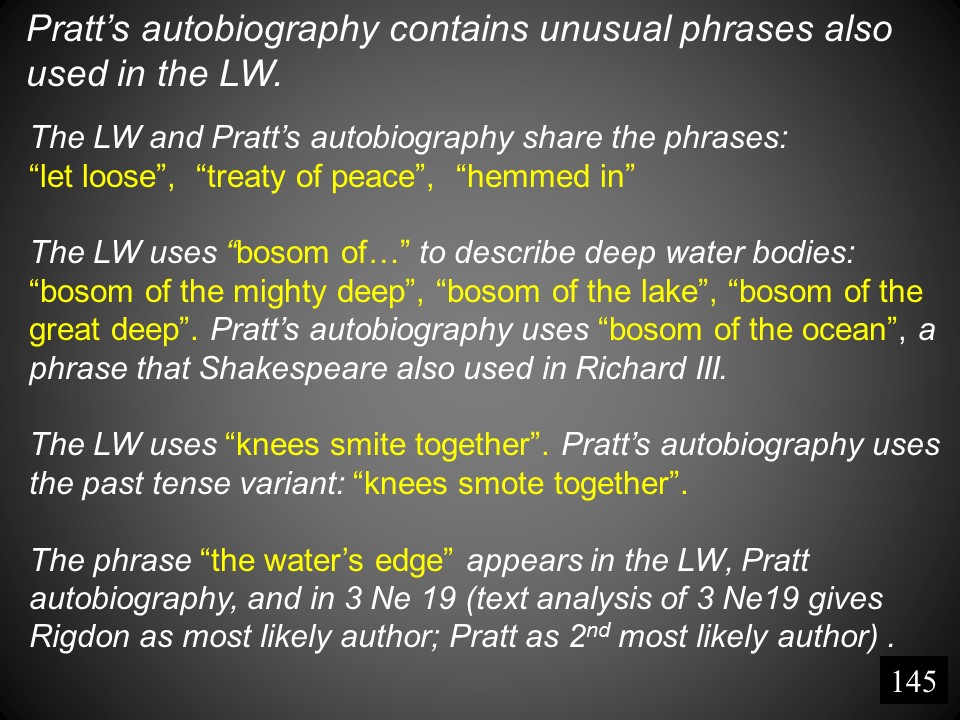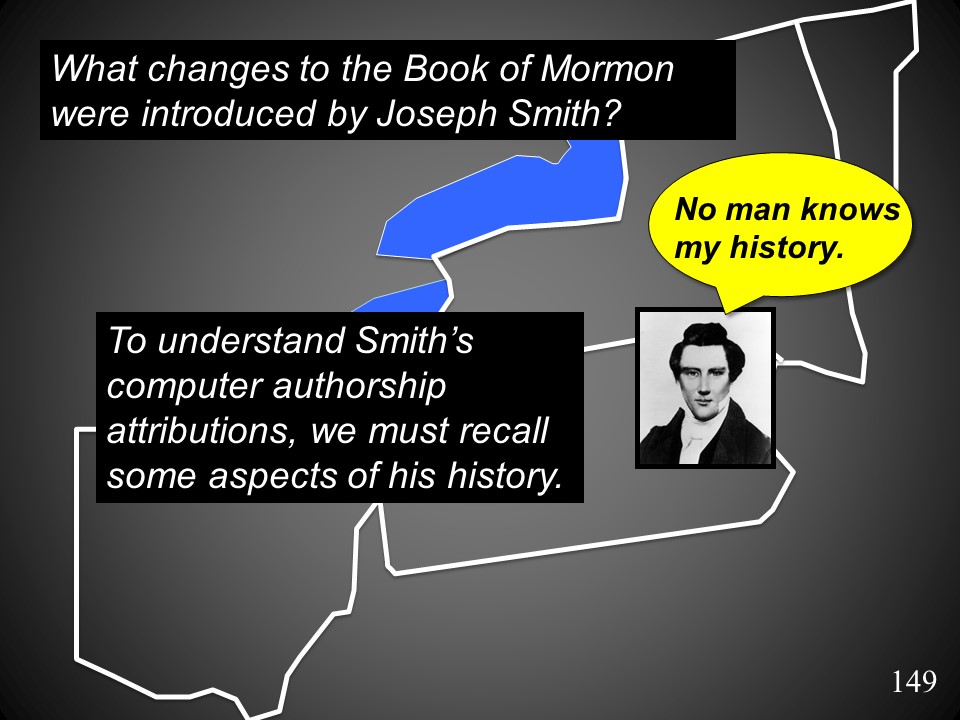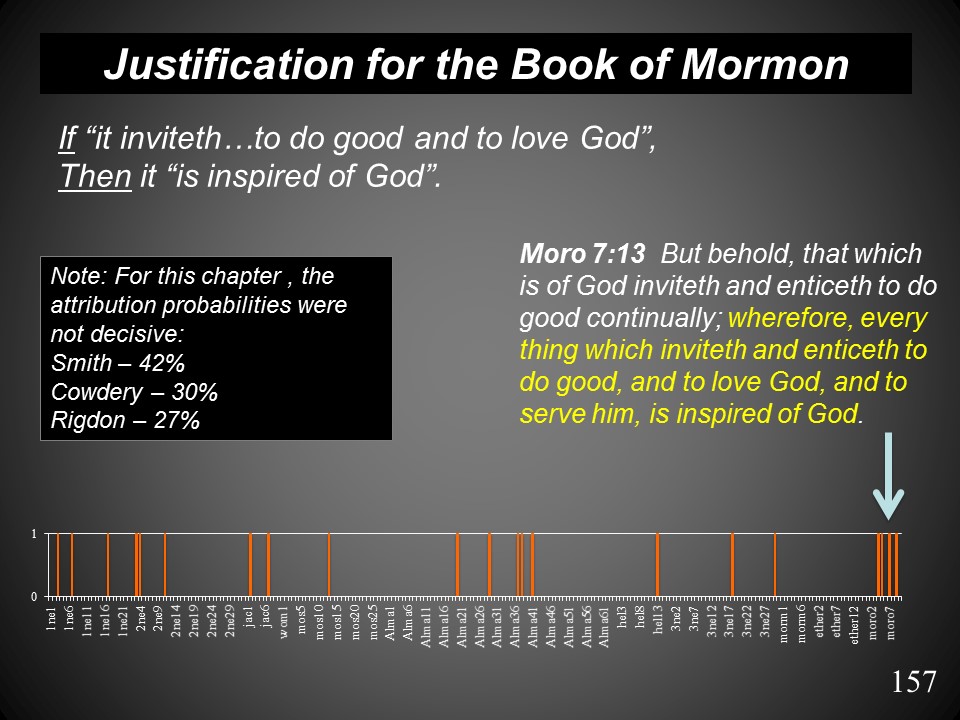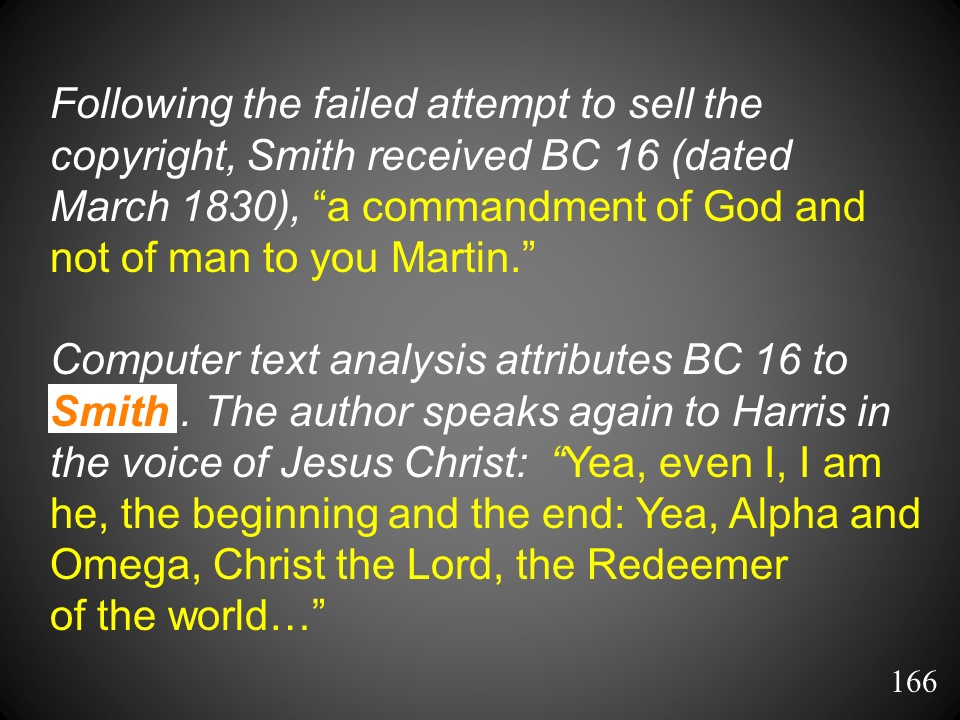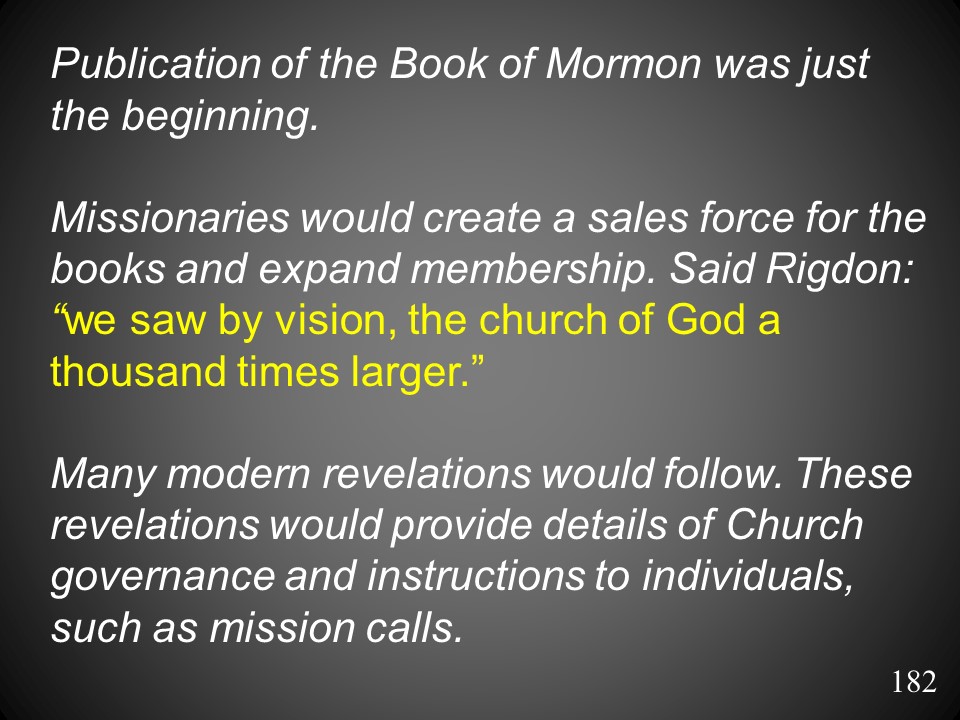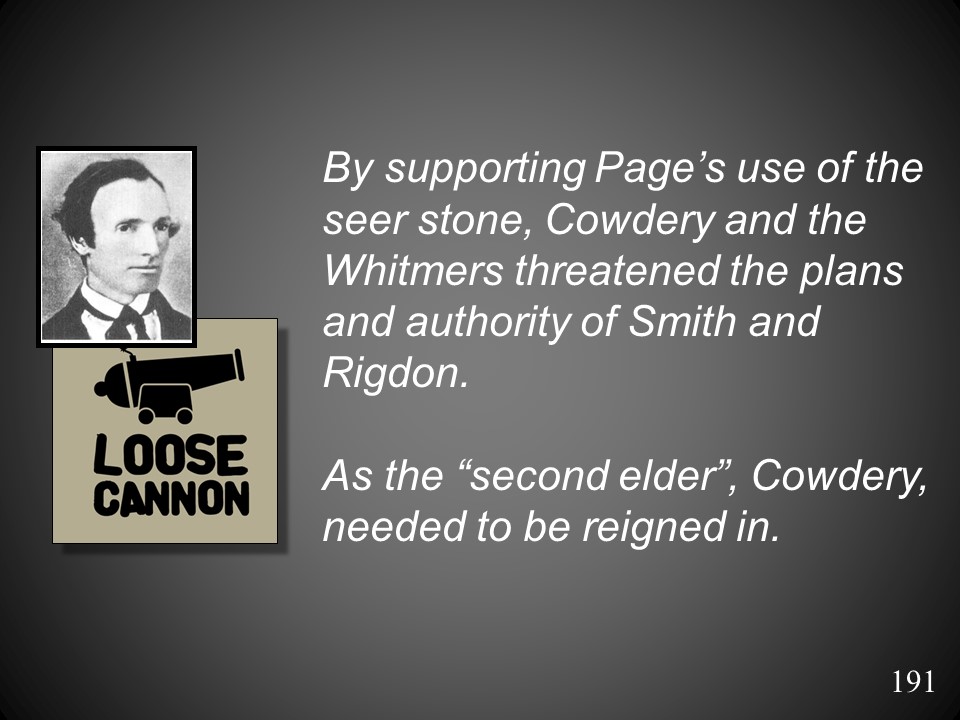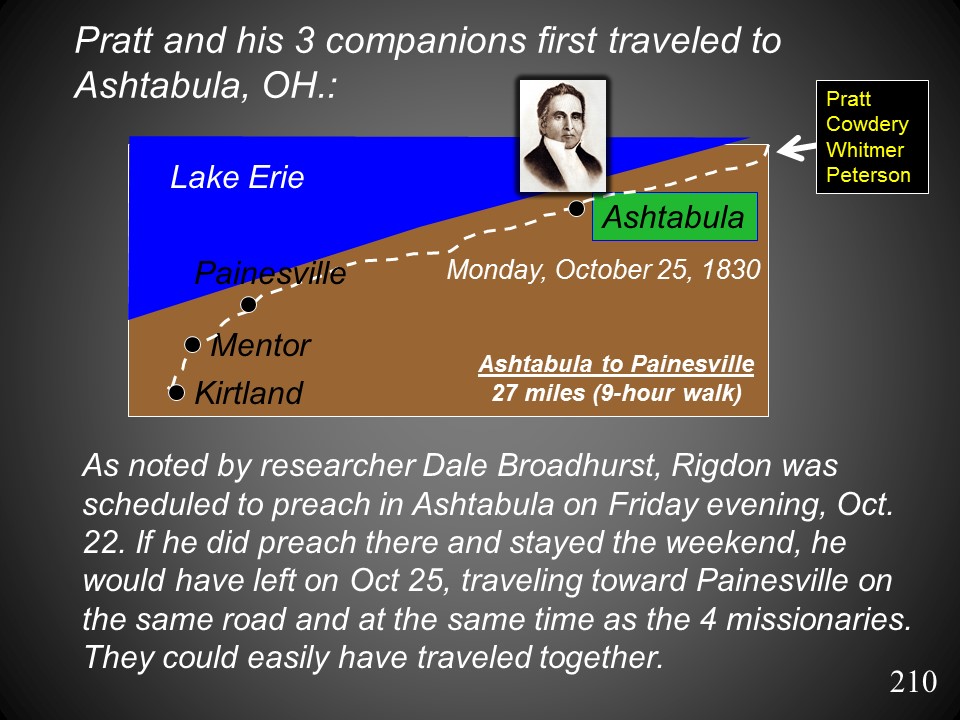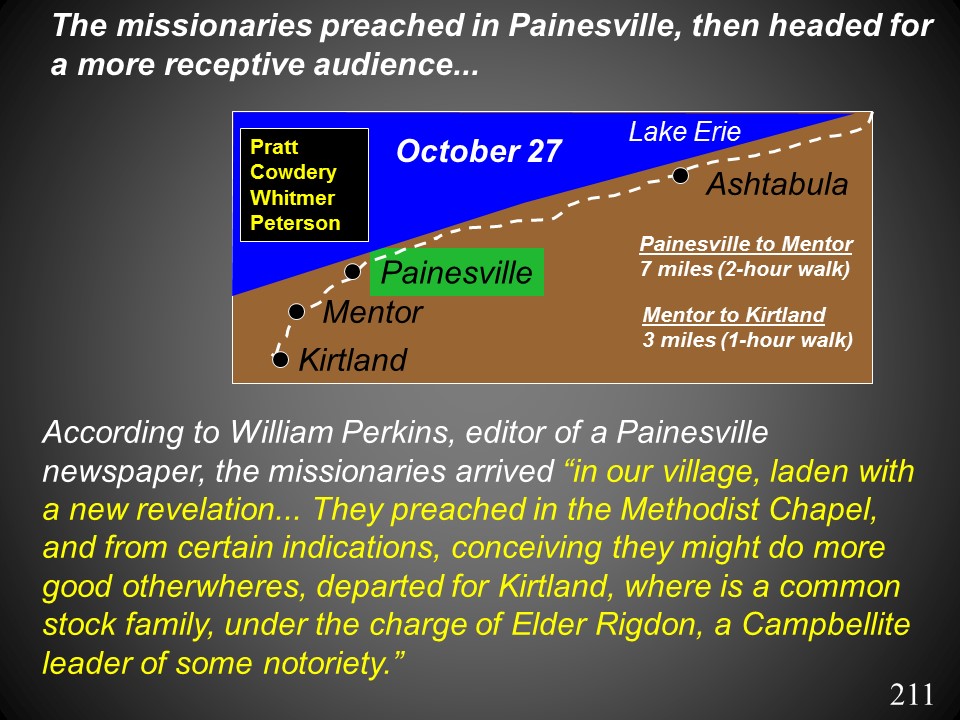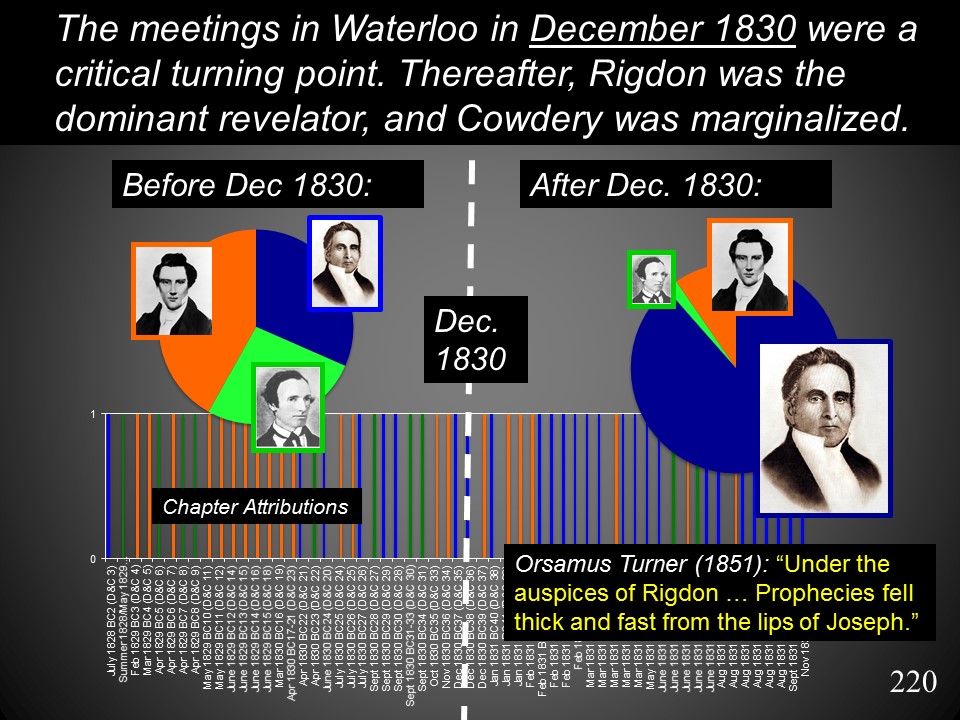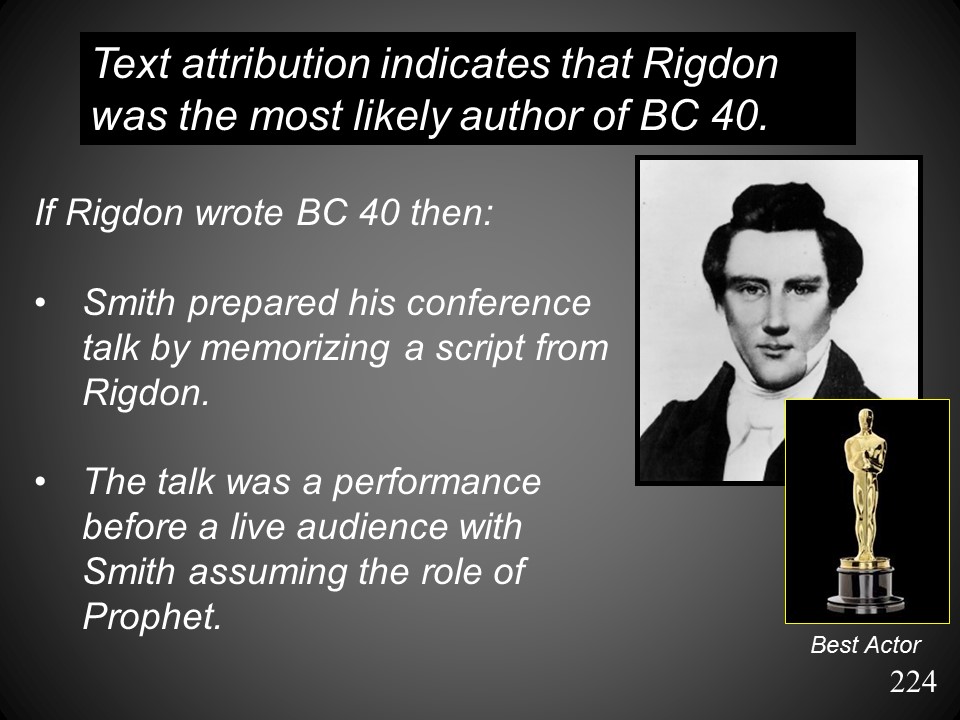Episode 06
Episode 06 – Slide 9
Episode 06 – Slide 14
From the above source:
Mapping Brain Tissue Loss in Adolescents with Schizophrenia. This map reveals the 3-dimensional profile of gray matter loss in the brains of teenagers with early-onset schizophrenia, with a region of greatest loss in the temporal and frontal brain regions that control memory, hearing, motor functions, and attention. Using novel image analysis algorithms, dramatic reductions in the profiles of gray matter were detected, based on a database of 96 images from schizophrenic patients scanned repeatedly with MRI. The parallel extraction of anatomical models from all patients in the image database required 60 CPU hours, when running in parallel on an SGI RealityMonster with 32 internal CPUs. [Image by Paul Thompson, Christine Vidal, Judy Rapoport, and Arthur Toga].
World Health Organization definition:
Schizophrenia The schizophrenic disorders are characterized in general by fundamental and characteristic distortions of thinking and perception, and affects that are inappropriate or blunted. Clear consciousness and intellectual capacity are usually maintained although certain cognitive deficits may evolve in the course of time. The most important psychopathological phenomena include thought echo; thought insertion or withdrawal; thought broadcasting; delusional perception and delusions of control; influence or passivity; hallucinatory voices commenting or discussing the patient in the third person; thought disorders and negative symptoms.
Episode 06 – Slide 16
D&C 10:57, 60, 65
Episode 06 – Slide 17
Photo of the Mormon baptism of Shivwits Indians by Daniel D. McArthur and Augustus P. Hardy. 1875.
Episode 06 – Slide 20
The Conversion of Oliver Cowdery
Larry E. Morris
Journal of Book of Mormon Studies: Volume – 16, Issue – 1, Pages: 4–17, 81–83
Provo, Utah: Maxwell Institute, 2007
Episode 06 – Slide 22
Episode 06 – Slide 24
In his letter of Nov. 12, 1878, Rev. Williams says: “Some of Rigdon’s nephews are members of the baptist churches in Pittsburgh. Every one who desires to know what they know of Rigdon’s deceptions feel delicate about asking them anything about him. I did hear from what I thought good authority that Rigdon when near his death expressed the wish that he was back in the Reg[ular] Bap[tist] Den[nomination]… Parley Pratt was a tin Pedlar who passed from Conn. out to the West who brought about the acquaintance between Rigdon and Smith.”
Episode 06 – Slide 31
BC 4 specifies that Joseph is to “translate a few more pages” and then stop for a season. By the end of March, 1829 – Smith had likely completed translation of Mosiah, with Emma and Reuben as scribes. Note the absence of phrases from Mosiah. Note also the absence of phrases the Book of Moroni. The Book of Moroni was likely dictated in June 1830, at the completion of dictation.
The phrases used in BC4 come from Book of Mormon chapters attributed to many authors, including Spalding. This suggests that Smith composed BC 4 using phrases from text then in his possession. BoM chapter attributions for unique phrases in BC 4:
Rigdon – 45%.
Spalding – 22%
Cowdery –9%
Smith – 9%
Pratt – 13%
Rigdon’s late-period revelations in the Post Collection (University of Utah) contain BC4 phrases, including “mighty prayer” 2 times,” gotten” 5 times, “wo” 11 times, “establish my” 1 time, “all manner of” 2 times, “manifestations” 1 time.
Episode 06 – Slide 38
Smith likely had several drivers for rapid dictation. Emma’s illness after loss of her firstborn would have slowed dictation in the Winter of 1828-29 and created a need for a different scribe. With Cowdery as scribe, Smith could read from text previously dictated in Bainbridge, Ohio (Episode 3), and Cowdery could simply record Smith’s dictation. The purpose of such a dictation would be to change the scribe handwriting.
Episode 06 – Slide 39
See also:
http://irr.org/facts-on-book-of-mormon-witnesses-part-1
Episode 06 – Slide 44
http://emp.byui.edu/SatterfieldB/Rel327/TranslatedCorrectly.pdf
Episode 06 – Slide 53
http://rsc.byu.edu/archived/days-never-be-forgotten-oliver-cowdery/3-oliver-cowdery-book-mormon-scribe
http://maxwellinstitute.byu.edu/publications/transcripts/?id=22
Lorenzo Saunders to Thomas Gregg (January 28, 1885): “Smith and Rigdon had an intimacy but it was very secret and still and there was a mediator between them and that was Cowdery. The [Spalding] manuscript was stolen by Rigdon and modelled over by him and then handed over to Cowdery and he copied them and Smith sat behind the curtain and handed them out to Cowdery and as fast as Cowdery copied them, they was handed over to Martin Harris and he took them to Egbert Granden [sic], the one who printed them, and Gilbert set the type.” Pages 132-133.in True Origin of the Book of Mormon (1914) by Charles Shook.
Cowdery was excommunicated in 1838. In his response to the excommunication, he wrote: ‘I will not be influenced, governed, or controlled in my temporal interests by any ecclesiastical authority or pretended revelation whatever, contrary to my own judgement.’
Former Mormon apostle William McLellin, who left the church and later wrote against it, once remarked that Oliver Cowdery would bear strong testimony of the Book of Mormon when amongst the saints, but when he was half-drunk, he would admit that it was all “a bottle of smoke.”
Episode 06 – Slide 56
Cowdery’s belief in “second sight” is described here:
http://irr.org/facts-on-book-of-mormon-witnesses-part-1
It is also documented by Grant Palmer:
Palmer, G. H., 2002. An Insider’s View of Mormon Origins. Signature Books, p.. 179.
Episode 06 – Slide 58
Episode 06 – Slide 59
http://www.sidneyrigdon.com/dbroadhu/CA/natruths.htm#040088-1d2
Letter of David Whitmer to Anthony Metcalf, March 1887. Quoted in Richard Lloyd Anderson, Investigating the Book of Mormon Witnesses (Salt Lake City: Deseret Book Company, 1981), p. 86.
Episode 06 – Slide 61
Letter of David Whitmer to Anthony Metcalf, March 1887, Martin Harris interview with Anthony Metcalf, c. 1873-74 in
Ten Years Before the Mast (Malad, Ida., 1888), p. 74; quoted in Richard Lloyd Anderson, Investigating the Book of Mormon Witnesses (Salt Lake City: Deseret Book Company, 1981), p. 86. See also Early Mormon Documents, 2: 348.
Episode 06 – Slide 62
Ten Years Before the Mast (Malad, Ida., 1888), p. 74; quoted in Richard Lloyd Anderson, Investigating the Book of Mormon Witnesses (Salt Lake City: Deseret Book Company, 1981), p. 86. See also Early Mormon Documents, 2: 348.
Whitmer statements from the John Murphy interview reported in the (Kingston Times, Kingston, Missouri, Dec. 16, 1887):
…I have heard that you saw an angel.
“I never saw one.”
I want your description in its shape, voice… language.
“It had no appearance or shape.”
Then you neither saw nor heard anything?
“Nothing, in the way you understand it.”
“How, then, could you bear testimony that you saw and heard an angel?”
“Have you never had impressions?”
Episode 06 – Slide 63
http://www.boap.org/LDS/Early-Saints/DWillers.html
D. Michael Quinn, trans. and ed., “The First Months of Mormonism: A Contemporary View by Rev. Diedrich Willers,” New York History 54 (July 1973):317-33. 1830. Diedrich Willers Letter (1830).
http://www.boap.org/LDS/Early-Saints/DWillers.html
Episode 06 – Slide 64
Viewed with “spiritual” not “natural” eyes
There is testimony from several independent interviewers — A. Metcalf and John Gilbert, as well as Reuben P. Harmon and Jesse Townsend (all non-Mormon), that Martin Harris and David Whitmer said they saw the plates with their ‘spiritual eyes’ only. This is contradicted by statements like that of David Whitmer in the Saints Herald in 1882, ‘these hands handled the plates, these eyes saw the angel.’
David Whitmer:
David Whitmer’s account (interview with the Kansas City Journal, 1881):
“He had two small stones of a chocolate color, nearly egg-shaped and perfectly smooth, but not transparent, called interpreters, which were given him with the plates. He did not use the plates in the translation, but would hold the interpreters to his eyes and cover his face with a hat, excluding all light, and before his eyes would appear what seemed to be parchment, on which would appear the characters of the plates in a line at the top, and immediately below would appear the translation in English, which Smith would read to his scribe, who wrote it down exactly as it fell from his lips. The scribe would then read the sentence written, and if any mistake had been made the characters would remain visible to Smith until corrected, when they faded from sight to be replaced by another line. The translation at my father’s occupied about one month, that is from June 1 to July 1, 1829.”
“Were the plates under the immediate control of Smith all the time?” “No, they were not. I will explain how that was. When Joseph first received the plates he translated 116 pages of the book of ‘Lehi,’ with Martin Harris as scribe. When this had been completed, they rested for a time, and Harris wanted to take the manuscript home with him to show to his family and friends. To this Joseph demurred, but finally asked the Lord if Harris might be allowed to take it. The answer was ;No.’ Harris teased Joseph for a long time, and finally persuaded him to ask the Lord a second time, pledging himself to be responsible for its safe keeping. To this second inquiry the Lord told Joseph Harris might take the manuscript, which he did, showing it to a great many people, but through some carelessness allowed it to be stolen from him. This incurred the Lord’s displeasure, and he sent an angel to Joseph, demanding the plates, and until Joseph had thoroughly repented of his transgressions would not allow him to have the use of them again. When Joseph was again allowed to resume the translation, the plates were taken care of by a messenger of God, and when Joseph wanted to see the plates this messenger was always at hand. The 116 pages of the book of ‘Lehi,’ which were stolen, were never recovered, nor would the Lord permit Joseph to make a second translation of it.” Continuing the interview, Mr. Whitmer is asked: “When did you see the plates?” “It was in the latter part of June, 1829. Joseph, Oliver Cowdery and myself were together, and the angel showed them to us. We not only saw the plates of the Book of Mormon, but he also showed us the brass plates of the book of Ether and many others. They were shown to us in this way. Joseph and Oliver and I were sitting on a log when we were overshadowed by a light more glorious than that of the sun. In the midst of this light, but a few feet from us, appeared a table, upon which were many golden plates, also the sword of Laban and the directors. I saw them as plain as I see you now, and distinctly heard the voice of the Lord declaiming that the records of the plates of the Book of Mormon were translated by the gift and the power of God.” “Who else saw the plates at this time?” “No one. Martin Harris, the other witness, saw them the same day, and the eight witnesses, Christian Whitmer, Hiram Page, Jacob Whitmer, Joseph Smith, Sr., Peter Whitmer, Jr., Hyram Smith, Jno. Whitmer, and Samuel H. Smith, saw them next day.” “Did you see the angel?” “Yes; he stood before us. Our testimony as recorded in the Book of Mormon is absolutely true, just as it is written there.” Can you describe the plates?” They appeared to be of gold, about six by nine inches in size, about as thick as parchment, a great many in number, and bound together like the leaves of a book by massive rings passing through the back edges. The engraving upon them was very plain and of very curious appearance. Smith made facsimiles of some of the plates, and sent them by Martin Harris to Professors Anson and Mitchell, of New York City, for examination. They pronounced the characters reformed Egyptian, but were unable to read them.”
Whitmer gave a different response to the question from Z. H. Gurley , ‘did you touch them [the plates]?’ His answer was, ‘We did not touch nor handle the plates.’ Asked about the table on which the plates rested, Whitmer replied, ‘the table had the appearance of literal wood as shown in the visions of the glory of God.’
Martin Harris:
Martin Harris was anything but a skeptical witness. He was known by many of his peers as an unstable, gullible and superstitious man. Reports assert that he and the other witnesses never literally saw the gold plates, but only an object said to be the plates, covered with a cloth. There are several accounts that illustrate the superstitious side of Harris.
Ronald W. Walker: “Once while reading scripture, he reportedly mistook a candle’s sputtering as a sign that the devil desired him to stop. Another time he excitedly awoke from his sleep believing that a creature as large as a dog had been upon his chest, though a nearby associate could find nothing to confirm his fears. Several hostile and perhaps unreliable accounts told of visionary experiences with Satan and Christ, Harris once reporting that Christ had been poised on a roof beam.” , “Martin Harris: Mormonism’s Early Convert,” Dialogue: A Journal of Mormon Thought 19 (Winter 1986): 34-35
John A. Clark letter, August 31, 1840: “No matter where he went, he saw visions and supernatural appearances all around him. He told a gentleman in Palmyra, after one of his excursions to Pennsylvania, while the translation of the Book of Mormon was going on, that on the way he met the Lord Jesus Christ, who walked along by the side of him in the shape of a deer for two or three miles, talking with him as familiarly as one man talks with another.” According to two Ohio newspapers, shortly after Harris arrived in Kirtland he began claiming to have “seen Jesus Christ and that he is the handsomest man he ever did see. He has also seen the Devil, whom he described as a very sleek haired fellow with four feet, and a head like that of a Jack-ass.” Vogel,EMD 2: 271, note 32.
The Reverend John A. Clark, who knew Harris, said Martin “had always been a firm believer in dreams, and visions and supernatural appearances, such as apparitions and ghosts, and therefore was a fit subject for such men as Smith and his colleagues to operate on.”
Lorenzo Saunders said Harris was a “great man for seeing spooks.”
Presbyterian minister Jesse Townsend of Palmyra called Harris a “visionary fanatic.”
Joseph Smith:
Smith was a master of the con for his era, and it is likely that he had the ability to produce plates and witnesses. Others of his era had similar skills. James Jesse Strang, a self-proclaimed prophet who led a Mormon break-off group after Smith died, also produced a set of scriptures from plates that also had witnesses. Strang had 7 witnesses for his Book of the Law of the Lord. See: http://www.strangite.org/Law.htm#Testimony. Harris followed Strang for some time. Strangites still exist today and still believe in their witnesses.
If we were to believe testimonies regarding the gold plate size and weight, pure gold plates would have weighed >200lbs, but those who claimed to have hefted them say they felt closer to 60lbs. The claim of 60lbs suggests a lighter material than gold. Could Smith and/or associates have made plates from common, inexpensive elements like copper? It would seem that there’s a fair chance the plates were made of copper. Copper is malleable. But those that saw the plates swear they were gold, not copper in color. It’s an easy and old jeweler’s trick to make copper look like gold: Get Zinc and Sodium Hydroxide (lye), add a pinch of zinc to water, add Sodium Hydroxide. Bring to a boil then turn off the heat. Apply it to copper. Wait until copper turns silver and remove it very carefully using tongs. Heat the silvered copper until it turns gold. A treasure hunter searching for gold would know how to test for fake gold like this. And probably how to make it too.
In July, 1837, Smith left on a five-week missionary tour to Canada, only to find on his return that all three of the Witnesses had joined a faction opposing him. This faction rallied around a young girl who claimed to be a seeress by virtue of a black stone in which she read the future. David Whitmer, Martin Harris, and Oliver Cowdery all pledged her their loyalty, and Frederick G. Williams, formerly Joseph’s First Counselor, became her scribe. The girl seer would dance herself into a state of exhaustion, fall to the floor, and burst forth with revelations. (See Lucy Smith: Biographical Sketches, pp. 211-213).
December 16, 1838 – Smith said of former Church associates, including all of the 3 witnesses: “Such characters as McLellin, John Whitmer, David Whitmer, Oliver Cowdery, and Martin Harris are too mean to mention; and we had liked to have forgotten them”. See: http://www.utlm.org/newsletters/no88.htm
Sidney Rigdon’s view of the witnesses:
July 1838 – Rigdon said of former Church associates, including 2 of the 3 witnesses: ” Oliver Cowdery, David Whitmer, and Lyman E. Johnson, united with a gang of counterfeiters, thieves, liars, and blacklegs of the deepest dye, to deceive, cheat, and defraud the saints out of their property.” US Senate Document 189
See: http://thedigitalvoice.com/enigma/essays/rodsmn04.htm
Episode 06 – Slide 65
The statement of Stephen Burnett in a letter dated April 15, 1838, indicates that the witness testimonies involved visions, imagination, and persuasion: “I have reflected long and deliberately upon the history of this church & weighed the evidence for & against it loth (sic) to give it up – but when I came to hear Martin Harris state in public that he never saw the plates with his natural eyes only in vision or imagination, neither Oliver [Cowdery] nor David [Whitmer] & that the eight witnesses never saw them & hesitated to sign that instrument for that reason, but were persuaded to do it, the last pedestal gave way, in my view our foundation was sapped & the entire superstructure fell in heap of ruins.” (Stephen Burnett letter to Lyman E. Johnson dated April 15, 1838. Typed transcript from Joseph Smith Papers, Letter book, April 20, 1837 – February 9, 1843, microfilm reel 2, pp. 64-66, LDS archives.).
Burnett also reported Harris saying that he had ‘hefted the plates repeatedly in a box with only a tablecloth or handkerchief over them, but he never saw them only as he saw a city through a mountain.’ Nonetheless, Harris said he believed the Book of Mormon to be true. In the revelation given the three witnesses before they viewed the plates they were told, ‘it is by your faith that you shall view them’ and ‘ye shall testify that you have seen them, even as my servant Joseph Smith Jr. has seen them, for it is by my power that he has seen them.’
Episode 06 – Slide 66
Episode 06 – Slide 68
Text source: http://www.sidneyrigdon.com/dbroadhu/CA/natr1988.htm
Testimony from an ‘unattributed recollection” from type set preserved in the A. B. Deming papers and reprinted in the 1988 “Naked Truths about Mormonism” newsletter:
“The original Sherman wagon shop and its smithy were built in the 1820s by Rhodes Sherman, Sr. Sherman’s son Alson was a contemporary of Joseph Smith, Jr. and Oliver Cowdery and it seems that he was privy to some details about various secret activities carried on by those two in his father’s shop in about 1828. Oliver Cowdery was then apart-time coppermith who possessed considerable skill in preparing copper engraving plates for the old-fashoned hand printing presses of that period. He had most recently found some employment in this line of work and related tasks in Canadiagua, but,following the untimely death of his employer, young Cowdery lodged firstwith his brother and then with his cousins (the Joe Smith family of Manchester) and there became a sometime participant in the infamous”Gold Bible Company.” After Joseph Smith, Jr. had his dream about the angel, it was decided in private midnight consultations that the contrived appearance of real metallic plates would be of especial use to the Bible Company.
Oliver was dispatched to the Sherman smithy with orders to fabricate a book of plates, held together with rings. Making use of various bits of scrap copper, Cowdery first attempted to forge the necessary production out behind the wagon shop. When that process proved too tedious for his taste, the coppersmith instead beat some worn-out engraving plates into serviceable “ancient sheets,” nearly as thin as paper. According to onlooker Sherman a half-dozen such plates were manufactured, but for what purpose he was never told. Burnished to a gleaming finish with brass polish, the copper plates had the look and feel of pure gold to the credulous farmers of that region. Still, they were so few and so unlike gold in weight that the Bible Company made slight use of their wondrous treasure. Once Mr. Harris and the Whitmers had been adequately fooled Cowdery and Smith exchanged the copper “treasure” for new hats and a couple of plugs of tobacco in Macedon and all were happy with the trade.”
According to Smith, the plates “had the appearance of gold”, and were:
“…six inches wide and eight inches long and not quite so thick as common tin. They were filled with engravings, in Ancient Egyptian characters and bound together in a volume, as the leaves of a book with three rings running through the whole. The volume was something near six inches in thickness, a part of which was sealed. The characters on the unsealed part were small, and beautifully engraved. The whole book exhibited many marks of antiquity in its construction and much skill in the art of engraving.”
Smith, Joseph, Jr. (March 1, 1842), “Church History [Wentworth Letter”], Times and Seasons 3 (9): 706–10.
Episode 06 – Slide 73
Thomas Horne, “Introduction to the Critical Study and knowledge of the Holy Scriptures”, Philadelphia (American Edition), 1825
Episode 06 – Slide 74
‘has” is used iinstead of “have” (Appalachian English). Post collection Section 51 reads: “For since the signs of the gospel has confirmed the truth before their eyes they can have no excuse for their sin.”
Moroni 8:5 (1830) reads: “for I have learned the truth, there has been disputations among you concerning baptism…”
Moroni 10:1 (1830) reads “Now I, Moroni, write somewhat as seemeth me good; and I write unto my brethren, the Lamanites and I would that they should know that *more than four hundred and twenty years has passed away since the sign was given of the coming of Christ.”
2. “was” is misconjugated (Appalachian English). Post Collection Section 92 reads: “The two scoundrels who did this work was George W. Robinson who had married his daughter, and a connection of his own with him whose name was John Olney.” Moroni 8:29 (1830) reads: “prophecies which was spoken by the prophets…”; Moroni 10:27 (1830) – Did I not declare my words unto you, which was written by this man, like as one crying from the dead, yea, even as one speaking out of the dust? The word “is” is used when the plural “are” should be used. Post Collection reads: “…Thus ended the “Church of Jesus Christ of Latter day Saints,” and it never can move again till the Lord inspires men and women to believe it. assembleys of men collected together since then is not the Church of Jesus Christ of Latter day Saints nor never can there be such a church till the Lord moves it by his own power, as he did the first.”
3. Use of the word “needeth” (Early Modern English). Post Collection Section 44 reads: “Let my servant William (whose surname is Swett) stir up his quorum to enter the field of labour and shew themselves workmen that needeth not to be ashamed & let the elders also be called on that all may go forth as one man for the day is approaching when great things must and will be done.”
Moroni 8:20 (1830): “he that saith that little children needeth baptism denieth the mercies of Christ…”
4. Use of the term “sufferings” (Early Modern English). Post Collection Section 4 reads “. For she was sharer in all his afflictions, tribulations and sufferings” Moroni 9: 19 (1830) – “And they have become strong in their perversion; and they are alike brutal, sparing none, neither old nor young; and they delight in everything save that which is good; and the sufferings of our women and our children upon all the face of this land doth exceed everything; yea, tongue cannot tell, neither can it be written”
5. Misuse of “which is” (Appalachian English). Post Collection Section 7: “Thus saith the Lord by the spirit of holiness, the time has come for the Children of Zion to begin to prepare to escape from the desolations of Babylon which is about to fall on the heads of those who dwell in the eastern lands. Mormon 10:23 (1830) – And Christ truly said unto our fathers: If ye have faith ye can do all things which is expedient unto me.
6. Use of “shew” (both early Modern English and Appalachian English). Post Collection uses the word “shew” 19 times. Moroni 10:29 (1830) – And God shall shew unto you, that that which I have written is true”. On May 3, 1836, Rigdon wrote to the the Editor of the Messenger and Advocate”. “Those who did not shew guns openly, had boxes of the size usually made to contain guns. At the last advices from Kirtland all the County Officers were filled with Latter day saints. H. C.” http://www.centerplace.org/history/ma/v2n09.htm. In May of 1836, Rigdon wrote the following letter to Cowdery: “Simons would do well also to say to his brother Darwin Atwater, as he has a great deal of labor to carry about and read Howe’s book, that he can be favored with the history of old Clapp, his wife’s father, to carry with him; so that he can shew the people Campbellism unveiled also.” http://www.centerplace.org/history/ma/v2n09.htm
7. Use of “shewing” (both early Modern English and Appalachian English). Post Collection Section 42 reads: “The book of Mormon teaches of principles shewing the Children of Zion the requirements of the Lord pertaining to purification with the laws of obedience and all things pertaining to the gospel.” Moroni 9:25 (1830) reads “and the shewing his body unto our fathers..”
8. Misuse of do” (Appalachian English): Collection of Facts, Relative to the Course Taken by Elder Sidney Rigdon, in the States of Ohio, Missouri, Illinois and Pennsylvania. By Jedidiah M. Grant, One of the Quorum of Seventies. Number One. Published by Brown, Bicking & Guilbert, Printers, No. 56 North Third Street, Philadelphia, 1844: “At times he would say, (as he did in this city near five years ago,) the Lord suffers me to be afflicted because I aspire to get ahead of Br. Joseph, thinking myself more capable to lead the Church than he is. But the Lord (said Elder R.,) don’t think so. “ http://www.sidneyrigdon.com/Grnt1844.htm
9. “a-prefixing” (Appalachian English). Rigdon used a-prefixing in the Post Collection: “The people of the Lord will then neither be Church of Christ nor Zion by denomination but will be the kingdon of ‘heaven’ into the likeness of which it is a going to be assimilated.” Van Wagoner, p. 141. Rigdon’s 1873 Letter to Chs. L. Woodward: “We know nothing about the people called Mormons now. The Lord notified us that the Church of Jesus Christ of Latter day saints were a going to be destroyed and for us to leave we did so, and the Smiths were killed a few days after we started. Since that I have had no connection with any of the people who staid and built up to themselves churches and chose to themselves leaders such as they chose and then framed their own religion.”
(attributed to Rigdon) uses the phrase “have arriven” (Appalachian English)
Episode 06 – Slide 75
http://www2.ferrum.edu/applit/studyg/dialect/features.htm
* A-prefixing on –ing participials. Example: …and he came a-runnin’ down there” Reference: Wolfram and Christian (1976); Christian, Wolfram, Dube (1988)
* No –ly on adverbs. Examples: He explained it real simple.
* Subject-Verb nonconcord (found in several dialects) Example: We was, he don’t Reference: Wolfram and Christian (1976)
Irregular verbs (found in several dialects)
1. Regularization of irregular simple past tense verbs. Example: The corn growed real good last year. Reference: Christian, Wolfram and Dube (1988)
2. Uninflected simple past. Example: Finally, she come by here…… Reference: Christian, Wolfram and Dube (1988)
3. Simple past same as past participle Example: That’s all I seen of it Reference: Christian, Wolfram, Dube (1988)
Completive or non-participial use of done. Example: I think they done took it. Reference: Christian, Wolfram, Dube (1988)
Multiple negation (found in several dialects). Example: Ain’t never; can’t hardly Reference: Wolfram and Christian (1976)
Uninflected plural nouns when nouns preceded by measures. Example: two gallon of water Reference: Wolfram and Christian (1976)
Use of “for to” for “to” http://en.wikipedia.org/wiki/Ozark_English
Episode 06 – Slide 78
Source of quote: Braden-Kelley Debate (1st edition: Cincinnatti, 1884)
http://www.solomonspalding.com/docs/braden/1884BnKa.htm
Episode 06 – Slide 88
Episode 06 – Slide 90
Harper’s Weekly of an 1871 Sacrament Meeting in the Mormon Tabernacle in Salt Lake City, Utah.. The double-page illustration shows the administration of the “Sacrament,” large pewter vessels, of which several may be seen in front of the pulpit, being used for the purpose. All present, men, women, children, and babies in arms, partake.
Image: http://en.wikipedia.org/wiki/File:Latter_Day_Saint_confirmation_(Mayhew_1852).png
Episode 06 – Slide 91
Articles of the Church of Christ, [possibly Fayette, NY], ca. June 1829; handwriting of Oliver Cowdery; three pages; CHL.
According the the Joseph Smith Papers website: “In composing this document, Cowdery drew on the earlier revelation and the Book of Mormon itself, especially material from 3 Nephi and Moroni. Although this document was included in Revelation Book 1, it was never published during JS’s lifetime. It may have been excluded because a subsequent text, the “Articles and Covenants of the Church of Christ” [D&C 20], incorporates part of this revelation and was adopted as the early church’s constitution. The latter covers much of the same ground as Cowdery’s “articles” while providing additional instruction regarding ministerial orders, basic beliefs, and historical origin.
Cowdery drafted this text in 1829, perhaps as early as June. Because of nonextant, missing pages from Revelation Book 1, that source contains only a partial copy of the commandment.
Textual evidence indicates that Whitmer and Cowdery copied revelations and other items into Revelation Book 1 from even earlier manuscripts that are no longer extant. All items in the manuscript book date from 1828 to 1834. Textual analysis suggests that the first half was copied mostly between spring 1831 and the end of that year, and the final item was copied in July 1835.
Revelation Book 1 contains the earliest known copies of many revelations and, in some cases, the only surviving early manuscript copy. It also contains items not found anywhere else, including a revelation on securing a copyright in Canada for the Book of Mormon.3
Episode 06 – Slide 99
Cowdery believed in “rhabdomancy”: divination by means of a rod, wand, staff, stick, or arrow.
Thomas Horne mentions rhabdomancy as a method of divination in An Introduction To the Critical Study and Knowledge of the Holy Scriptures, The reference is: Thomas Hartwell Horne, An Introduction To the Critical Study and Knowledge of the Holy Scriptures, 1st Am. ed., 4 vols. (Philadelphia: E. Littell, 1825), 3:358, 358n1; also “E. Littell… has in press, AN INTRODUCTION To the Critical Study and Knowledge of THE HOLY SCRIPTURES By Thomas Hartwell Horne, M.A.,” Wayne Sentinel (Palmyra, NY), 6 Apr. 1825, [3]; “Horne’s Introduction to the Study of the Bible, 4 vols.,” in “MORE NEW BOOKS,” Ontario Repository (Canandaigua, NY), 30 Aug. 1826, [3]; see ch. 6 for discussion of Home’s significance. Later editions of Home’s book corrected the misspelling of rhabdomancy. Dale Morgan reported that “Divining rods, which usually were forked twigs cut from witch hazel, willow, peach, or some other favored tree, have a similar antiquity, dating back to the times of the Medes and the Persians, but the employment of rhabdomancy specifically for locating mines and buried treasure seems to have developed about the fifteenth century in the Harz Mountains of Germany. The practice was brought to Cornwall by German miners in Elizabethan times, and became general in England and western Europe during the next century.”
http://www.sidneyrigdon.com/criddle/Smith-Source2.htm
Episode 06 – Slide 100
Episode 06 – Slide 101
http://commons.wikimedia.org/wiki/File:Foster_Bible_Pictures_0078-1_Aaron’s_Rod_Budded_and_Blossomed.jpg
D&C 8:6-8
http://en.fairmormon.org/Doctrine_and_Covenants/Oliver_Cowdery_and_the_%22rod_of_nature%22
Episode 06 – Slide 102
Cowdery was excommunicated in 1838. At this point, he had become quite sceptical of revelations and their origins. In his response to his excommunication, he wrote: ‘I will not be influenced, governed, or controlled in my temporal interests by any ecclesiastical authority or pretended revelation whatever, contrary to my own judgement.’
Episode 06 – Slide 111
Complete figure legend: The Yankee Peddler from the drawing by Felix O. C. Darley in Frank Leslie’s Weekly. The first Yankee peddlers were young men able to cope with the dangers of the wilderness through which they had to travel. Subsequently, older men took up the peddler’s pack.
in Nov. 25, John St.John, editor of the Cleveland Herald, claimed that he knew Cowdery when he was a “a dabbler in the art of Printing, and principally occupied in writing and printing pamphlets, with which, as a pedestrian Pedlar, he visited the towns and villages of western New York and in Canada.”
http://www.solomonspalding.com/docs/1830h11b.htm
Episode 06 – Slide 112
Naked Truths About Mormonism
Vol. I. No. 1. (January, 1888)
edited by Arthur B. Deming
COPYRIGHTED 1888, BY ARTHUR B. DEMING.
ALL RIGHTS RESERVED.
Published Monthly by DEMING & CO., 856 Market St., Oakland.
VOL. I. OAKLAND, CAL., JANUARY, 1888.
http://www.solomonspalding.com/docs/deming.txt
http://www.sidneyrigdon.com/dbroadhu/CA/natr1988.htm#120088-4d6
In his letter of Nov. 12, 1878, Rev. Samuel Williams reported: “Some of Rigdon’s nephews are members of the baptist churches in Pittsburgh. Every one who desires to know what they know of Rigdon’s deceptions feel delicate about asking them anything about him. I did hear from what I thought good authority that Rigdon when near his death expressed the wish that he was back in the Reg[ular] Bap[tist] Den[nomination]… Parley Pratt was a tin Pedlar who passed from Conn. out to the West who brought about the acquaintance between Rigdon and Smith.
http://www.solomonspalding.com/docs/Wil1878a.htm
Episode 06 – Slide 122
Image source: http://www.merrycoz.org/bib/BOOKS.HTM
Image: http://www.hieropraxis.com/wp-content/uploads/2012/08/Facsimile-edition-of-Pilgrims-Progress-1895.jpg
Episode 06 – Slide 128
http://jared.pratt-family.org/parley_histories/parley_canada_letter_1836_may2.html
Here is the letter:
Kirtland, May 26, 1836.
Dear brother Cowdery:
Sir, having just returned from a short mission in Upper Canada, I take the liberty of addressing a few lines to you for insertion in the Messenger and Advocate praying that it may be edifying to the readers of that useful and interesting paper.
I left Kirtland April 5th, in company with elders, O. Pratt and F. Nickerson; and after a long and tedious journey, through mud and rain, we arrived in Upper Canada, where I took leave of the other two brethren, and pursued my course for Toronto, the capital of the Province, at which place I arrived on the 19th of April. I sought in vain for a chapel, court house or other public building, in which to preach, all being closed against me.—At length one or two private dwellings were opened freely, where I commenced, and continued preaching, until it was no longer practicable for want of sufficient room to accommodate the multitude, when I commenced preaching on the steps of a private dwelling: two rooms of the house were first filled, and then a large door-yard. This place was situated in the midst of the city so that many thousands could hear. I continued several sabbath days to hold forth the word of life to multitudes. I also continued preaching both in the city and country daily: In the country, we were under the necessity of opening large barns in order to accommodate the people. Many who were greatly rejoiced at first, soon began to search for truth with all diligence, by night and day, insomuch that sleep departed for a season from our eyes, and sometimes, daylight dawned in the East before we retired to rest. Our meetings were sometimes disturbed by Rev. gentlemen of the clergy; among them was the Rev. Mr. Evens, Editor of the Christian Guardian, and others who attended with a design to prove the Book of Mormon an imposition and myself an impostor, I refused to hear them at ten or eleven o’clock at night, in a crowded private dwelling, with out order or moderators; but I offered to meet any, or all of them on fair grounds, if they would open any public building, appoint moderators to keep order and give me half of the time, I pledged myself under these circumstances, to sustain the Book of Mormon with all the evidence they could the Bible, but they very prudently refused. One circumstance I will mention to show the weakness and falsehood, to which the clergy resort in their exertions against the truth.
The Rev. Mr. Milkins gave an appointment for preaching in the chapel in the country against Mormonism, on Friday evening, May 20th, I attended; the house was thronged with auditors, and after an introduction, with a lengthy preface on the subject of false christs, false prophets, barkers, jumpers &c. (as found in the preface of Mr. Campbell’s pamphlet, and other libelous publications) he, at length made a quotation from the 12th page of the Book of Mormon, concerning Laban’s sword of steel, stating that he was fully prepared to reject any book as a Revelation, which gave an account of steel, so early as six hundred years before Christ.
It being contrary to all history, he probably supposed we were ignorant of the Bible and had never read Job 20th chap. 24th verse and Jeremiah 15th: 12th verse, Psalm, 18 chap. 24 v. 2 Sam. 22 chap. 35 v. all these speak of steel earlier than Nephi. His next exertion was against Nephi for killing Laban and getting the brass plates by fraud and deception, saying, away with prophets of that description, as he never would acknowledge a prophet of that character, forgetting, that in so doing, he rejected Moses, who killed an Egyptian, hid him in the sand and run his country to escape the penalty of the law, and Samuel, who hewed down Agag a helpless, unarmed prisoner, in cool blood. He doubtless, forgot that Nephi’s life had been sought by Laban, and that Laban had robbed him of all his property which was exceeding great, and that he killed Laban in obedience to express commandment of the Lord.
His next objection was raised against page 46th where it is stated that Nephi’s brethren rebelled against him for attempting to build a ship. They sought to put him into the sea, but he commanded them not to touch him, saying if they did, they should wither as a dried reed. The Rev. gentleman represented them as taking him, and binding him and they did not wither as he prophesied. He probably supposed we should not read for ourselves, that they did not touch him at that time, but they repented of their wickedness, and assisted him to build a ship, and after they had built the ship, and been many days at sea, they took him and bound him, but not before. Even them, they were immediately chastised by judgments insomuch, that they soon loosed Nephi.
Another mighty effort was against page 189. Abinadi speaking of things to come as if they had already come, spake of the resurrection of Christ in the past tense, long before Christ was born. This was a great objection to the book, but equally so, the candid reader will discover against the book of Isaiah, who exclaimed (several hundred years before Christ’ birth) in the past tense. He was oppressed, and he was afflicted, yet he opened not his mouth, 53:7th, also in the 8th verse it is stated that he was taken from prison and from judgment &c. He must have supposed we would take for granted what the preacher said, and never read the Bible or the book of Mormon, either impartially for ourselves. Another objection was on page 232 where we find the account of Nehors, slaying Gideon and was taken before judge Alma, judged and hung for priestcraft instead of murder: nevertheless, these are the words of Alma on the same page, “thou hast shed the blood of a righteous man, who has done much good among this people, and were we to spare thee, his blood would come upon us for vengeance, therefore, thou art condemned to die.” Another objection was three days darkness on this land, and only three hours darkness in Asia. But I remember a division more close than that, where the Lord severed between the land of Goshen and the rest of Egypt, so that the Egyptians saw not one another for three days, “but the Hebrews had light in their dwellings”. Another objection was that the book of Ether gave the genealogy from the Tower of Babel back to Adam, 29 generations: The other scriptures made but 10 generations. He also stated that Ether did not trace it through the flood, consequently, how could the people be saved, whose genealogy Ether gave.
Now who has ever looked at the book of Ether and does not know, that no genealogy is given from the Tower back to Adam, but from the tower down through after generations to Ether? (see book of Mormon page 539) Another objection was, the witnesses to the book of Mormon, were interested witnesses consequently not to be believed. Probably, not recollecting that in so saying, he was rejecting the New Testament, as they first chosen witnesses of the resurrection of Christ, were all interested witnesses: their time, their character, their property and their lives were at stake, and all would be lost if Christ were an impostor. After exerting all his powers of speech, until near eleven o’clock, he at length dismissed, when I entered the pulpit and pledged myself to prove, misrepresentation and falsehood, throughout his entire discourse upon this subject. Some of the assembly began to clamor so loud, I could not be heard, although many wished to hear. Therefore, I was obliged to defer my reply to his several objections till the next day at 4 o’clock in the afternoon, at which time I had an appointment to preach in a barn in the same vicinity. I had an interview with the Rev. gentlemen in the morning, which lasted some hours. I showed him wherein he had stated falsehoods, or misrepresented many things in his argument: this I did before many witnesses. I then requested him to go before the public and make a humble confession of the wrong he had done, and the falsehoods he had been guilty of stating, but he utterly refused. At 4 o’clock P.M. a multitude assembled a the barn, I then replied publicly to the Rev. gentlemen’s arguments of the preceding evening. After I closed my discourse, we went to the water and I baptized nine persons, who, apparently, came with contrite spirits, believing with all their hearts; expressing a full determination to serve the Lord to the end. The next day being Sunday, May 22d, the numbers of those who had been baptized having increased to twenty five, and brethren O. Pratt and F. Nickerson being present and assisting, we laid our hands upon them and confirmed them in the name of the Lord Jesus, for the gift of the Holy Ghost. In the ordinances of the day, we were blessed with joy and peace and with the powers of the Holy Ghost. Thus grew the word of God and prevailed mightily. May the Lord bless them and add to their numbers, daily, such as shall be saved.
Yours in the bonds of the everlasting covenant.
To the Editor of the Messenger & Advocate. P. P. Pratt.
[Messenger and Advocate, May 1836] [Journal History of the Church of Jesus Christ of Latter-day Saints, May 26, 1836, 1-4]
[transcribed and proofread by David Grow, July 2006]
Episode 06 – Slide 130
http://jared.pratt-family.org/parley_histories/parley_canada_letter_1836_may2.html
Episode 06 – Slide 131
http://jared.pratt-family.org/parley_histories/parley_canada_letter_1836_may2.html
Sword image: http://www.mormonchronicle.com/nephis-honorable-execution-of-laban/
Broken bow image: http://gaymormonstriplingwarrior.blogspot.com/2013/02/and-it-came-to-pass.html
Moulten steel image: http://ebmakerfaire.files.wordpress.com/2013/10/img_1384.jpg
Episode 06 – Slide 134
http://3.bp.blogspot.com/-zvAJyo_HNoY/TtPlkgdnW8I/AAAAAAAACK0/X0LLGUZOy-s/s1600/471A-Image%2BHagoth%2527s%2BShipyard.jpg
Image showing Hagoth building a ship – courtesy of Dale Broadhurst
Episode 06 – Slide 135
Angel of the Prairies: http://mldb.byu.edu/anthology/Pratt-Angel%20of%20the%20Prairies.htm
Episode 06 – Slide 139
Episode 06 – Slide 146
Episode 06 – Slide 147
First preached publicly by Tahitian LDS missionary Louisa Pratt
Episode 06 – Slide 152
According to D&C 100, Smith was to be the “Seer and Revelator”; Rigdon was to be the “Expounder.” In 1863, three Rigdonites (members of the small branch of Mormonism that followed Rigdon after Smith’s death) – Joseph H. Newton, William Richards, and William Stanley – wrote an “appeal to the latter Day Saints” – later referred to as “Ridgon’s appeal” because he was its likely “shadow author”. This document spells out Rigdon’s intended roles for Smith and himself: Smith was supposed to have been the Translator – the one who prepared the way for Rigdon. Rigdon was to have been Spokesman and Gatherer of Israel, the One to establish Zion and prepare the way for Jesus Christ. See: http://sidneyrigdon.com/books/Appl1863.htm
Of note is the following passage from page 27 of “Rigdon’s Appeal”: “The Lord had said, in the Book of Mormon, that he would raise up to Joseph Smith a spokesman; and the Spirit said, in the Book of Doctrine and Covenants, that Sidney Rigdon was that spokesman. The case then stands thus: Joseph Smith was to translate the Book of Mormon, and Sidney Rigdon was to take it, and gather Israel. Here is the sum of the whole matter. The prophet Malachi had said that before Christ came, he would send his messenger, and he should prepare the way before him. Joseph Smith said that Sidney Rigdon was that messenger. The Spirit said that the Lord would raise up a spokesman to Joseph Smith, and Joseph Smith said that Sidney was that spokesman. The Lord said he would prepare a priesthood with which he would gather Israel. Joseph Smith said that Sidney Rigdon held that priesthood.”
http://sidneyrigdon.com/books/Appl1863.htm
The Book of Mormon and The Doctrine and Covenants are consistent with the argument in Rigdon’s Appeal. Smith was to translate. Rigdon was to speak and expound the translations. Rigdon was to prepare the way for Christ’s second coming. In The Book of Mormon, Rigdon is referred to as “spokesman”. Says 2 Nephi 3:17-18: “And the Lord hath said, I will raise up a Moses [Joseph Smith]; and I will give power unto him in a rod; and I will give judgment unto him in writing. Yet I will not loose his tongue, that he shall speak much; for I will not make him mighty in speaking, but I will write unto him my law, by the finger of mine own hand; and I will make a spokesman for him. And the Lord said unto me also, I will raise up unto the fruit of thy loins, and I will make for him a spokesman. And I, behold, I will give unto him that he shall write the writing of the fruit of thy loins unto the fruit of thy loins; and the spokesman of thy loins shall declare it”. It is not clear how Smith would have had foreknowledge of a spokesman, as mentioned in the preceding passage, if Rigdon had no role in composing The Book of Mormon.
In 1864, Rigdon reiterated his intended relationship with Smith in Section 92 of the Post Collection: “Behold there were two revelators foretold in the book that should be raised up in order that all the work testified of in the book might be accomplished. One was called Revelator, translator &c. and the other spokesman. The revelator was to translate the record from the plates and the other to proclaim it to the house of Israel…””And in the ancient prophecies it was said of him that the Lord would give him the tongue of the learned. Such is the character that I the Lord your God present before you in the person of the head of the second dispensation under the ruling of the book of Mormon… ”
Rigdon was Smith’s “Revelator”, at least for The Book of Commandments. As such, Rigdon would have “revealed” scriptures that outlined his role as he anticipated it to be.
Episode 06 – Slide 153
Jac 2 probabilities:
Smith – 79%
Rigdon – 10%
Cowdery – 9%
Episode 06 – Slide 154
Journal of Book of Mormon Studies: Volume – 6, Issue – 2, Pages: 99-123
Provo, Utah: Maxwell Institute, 1997
Joseph Smith is apparently the “servant Gazelem”17 to which Alma 37:23–25 refers: “ And the Lord said: I will prepare unto my servant Gazelem, a stone, which shall shine forth in darkness unto light, that I may discover unto my people who serve me, that I may discover unto them the works of their brethren, yea, their secret works, their works of darkness, and their wickedness and abominations.And now, my son, these interpreters were prepared that the word of God might be fulfilled, which he spake, saying:I will bring forth out of darkness unto light all their secret works and their abominations; and except they repent I will destroy them from off the face of the earth; and I will bring to light all their secrets and abominations, unto every nation that shall hereafter possess the land.”
http://maxwellinstitute.byu.edu/publications/jbms/?vol=6&num=2&id=148
Episode 06 – Slide 155
1826 – Rigdon addressed the Regular Baptist Mahoning Association at annual meeting in Canfield. Other speakers include Alexander Campbell, Thomas Campbell, and Walter Scott. Rigdon uses John 16 for his text. P. 42 Van Wagoner. Phrases from John 16 that appear in Helaman 13: “the time cometh that” (John 16:2; Hel 13:31), “in that day ye” (John 16:23; Hel 13:33), “come unto the world” (John 16:28; 3 Nephi 11:8). Both Hel 13 and 3 Ne 11 are attributed to Rigdon.
Hel 13:17-20. And behold, a acurse• shall come upon the land, saith the Lord of Hosts, because of the peoples’ sake who are upon the land, yea, because of their wickedness and their abominations. And it shall come to pass, saith the Lord of Hosts, yea, our great and true God, that whoso shall ahide• up treasures in the earth shall find them again no more, because of the great curse of the land, save he be a righteous man and shall hide it up unto the Lord. For I will, saith the Lord, that they shall hide up their atreasures• unto me; and cursed be they who hide not up their treasures unto me; for none hideth up their treasures unto me save it be the righteous; and he that hideth not up his treasures unto me, cursed is he, and also the treasure, and none shall redeem it because of the curse of the land. And the day shall come that they shall hide up their treasures, because they have set their hearts upon riches; and because they have set their hearts upon their riches, and will hide up their treasures when they shall flee before their enemies; because they will not hide them up unto me, cursed be they and also their treasures; and in that day shall they be smitten, saith the Lord.
Episode 06 – Slide 159
http://www.boap.org/LDS/Early-Saints/JHGilbert.html
Source: Recollections of John H. Gilbert [Regarding printing Book of Mormon], 8 September 1892, Palmyra, New York, typescript, BYU.
RECOLLECTIONS OF JOHN H. GILBERT
The contract was to print and bind with leather, 5000 copies for $3,000. Mr. Grandin got a new font of Small Pica, on which the body of the work was printed. When the printer was ready to commence work, Harris was notified, and Hyrum Smith brought the first installment of manuscript, of 24 pages, closely written on common foolscap paper–he had it under his vest, and vest and coat closely buttoned over it. At night Smith came and got the manuscript, and with the same precaution carried it away. The next morning with the same watchfulness, he brought it again, and at night took it away. This was kept up for several days. The title page was first set up, and after proof was read and corrected, several copies were printed for Harris and his friends. On the second day–Harris and Smith being in the office–I called their attention to a grammatical error, and asked whether I should correct it? Harris consulted with Smith a short time, and turned to me and said: “The Old Testament is ungrammatical, set it as it is written.”
After working a few days, I said to Smith on his handing me the manuscript in the morning; “Mr. Smith, if you would leave this manuscript with me, I would take it home with me at night and read and punctuate it.” His reply was, “We are commanded not to leave it.” A few mornings after this, when Smith handed me this manuscript, he said to me:–“If you will give me your word that this manuscript shall be returned to us when you get through with it, I will leave it with you.” I assured Smith that it should be returned all right when I got through with it. For two or three nights I took it home with me and read it, and punctuated it with a lead pencil. (This will account for the punctuation marks in pencil, which is referred to in the Mormon Report, an extract from which will be found below).
Martin Harris, Hyrum Smith and Oliver Cowdery were very frequent visitors to the office during the printing of the Mormon Bible. The manuscript was supposed to be in the handwriting of Cowdery. Every Chapter, if I remember correctly, was one solid paragraph, without a punctuation mark, from beginning to end.
Names of persons and places were generally capitalized, but sentences had no end. The character or short &, was used almost invariably where the word and, occurred, except at the end of a chapter. I punctuated it to make it read as I supposed the Author intended, and but very little punctuation was altered in proof-reading. The Bible was printed 16 pages at a time, so that one sheet of paper made two copies of 16 pages each, requiring 2500 sheets of paper for each form of 16 pages. There were 37 forms of 16 pages each,~570 pages in all.
The work was commenced in August 1829, and finished in March 1830,–seven months. Mr. J. H. Bortles and myself done the press work until December taking nearly three days to each form, Cowdery held and looked over the manuscript when most of the proofs were read. Martin Harris once or twice, and Hyrum Smith once, Grandin supposing these men could read their own writing as well, if not better, than any one else; and if there are any discrepancies between the Palmyra edition and the manuscript these men should be held responsible. Joseph Smith, Jr. had nothing to do whatever with the printing or furnishing copy for the printers, being but once in the office during the printing of the Bible, and then not over 15 or 20 minutes.
Episode 06 – Slide 162
A revelation given to Oliver Cowdery, Hiram Page, Josiah Stowell and Joseph Knight, given at Manchester, Ontario County, New York.
Behold, I the Lord am God. I created the heavens and the earth and all things that in them are, wherefore they are mine.
And I sway my scepter over all the earth, and ye are in my hands to will and to do — that I can deliver you out of every difficulty and affliction, according to your faith and diligence and uprightness before me.
And I have covenanted with my servant Joseph, that earth nor hell combined against him shall not take the blessing out of his hands; which I have prepared for him, if he walketh uprightly before me — neither the spiritual nor the temporal blessing;
And behold I also covenanted with those who have assisted him in my work that I will do unto them even the same, because they have done that which is pleasing in my sight (yea even all, save it be one* only).
Wherefore be diligent in securing the copyright of my work upon all the face of the earth of which is known by you, unto my servant Joseph, and unto him whom he willeth, according as I shall command him;
That the faithful and the righteous may retain the temporal blessing as well as the spiritual,
And also that my work be not destroyed by the workers of iniquity to their own destruction and damnation when they are fully ripe.
And now, behold I say unto you, that I have covenanted and it pleaseth me that Oliver Cowdery, Joseph Knight, Hiram Page, and Josiah Stowell shall do my work in this thing, yea, even in securing the copyright;
And they shall do it with an eye single to my glory, that it may be the means of bringing souls unto salvation through mine Only Begotten.
Behold I am God. I have spoken it.
Wherefore, I say unto you that ye shall go to Kingston,** seeking me continually through mine Only Begotten, and if ye do this ye shall have my spirit to go with you and ye shall have an addition of all things which is expedient in me. (Amen.)***
And I grant unto my servant a privilege that he may sell a copyright through you — speaking after the manner of men — for the four provinces if the people harden not their hearts against the enticings of my spirit and my word;
For behold, it lieth in themselves to their condemnation or to their salvation. Behold my way is before you, and the means I will prepare, and the blessing I hold in mine own hand, and if ye are faithful, I will pour out upon you even as much as ye are able to bear, and thus it shall be.
Behold I am the Father, and it is through mine Only Begotten, which is Jesus Christ your Redeemer. Amen.
http://beta.josephsmithpapers.org/paperSummary/revelation-circa-early-1830#1
http://beta.josephsmithpapers.org/paperSummary/revelation-circa-early-1830#2
Phrases in this revelation that are found elsewhere:
“Behold, I the Lord am God” – appears in BC 4 (D&C 5), attributed to Cowdery
“workers of iniquity” – Alma 5 (Cowdery)
“after the manner of men” – 1 Nephi 18 (also found in Bible)
“Behold I am the Father” – Ether 4:12 (Rigdon)
“through mine only Begotten” – Alma 12, DC 29:46 (Cowdery)
Episode 06 – Slide 163
Marvin S. Hill, in his book, “Quest for Refuge,” comments as follows concerning the copyright question: “Joseph Capron wrote that Smith hoped his volume would “relieve the family from all pecuniary embarrassment.” There is evidence from Mormon sources to confirm Capron’s recollections. Smith himself admitted in his unpublished history that “he sought the plates to obtain riches.” Hyrum Smith wrote to his grandfather, Asael, that he believed that service to the Lord would bring the family their long-awaited prosperity. In October 1829, Joseph wrote excitedly to Oliver Cowdery that Josiah Stowell had a chance to obtain five or six hundred dollars and that he was going to buy copies of the Book of Mormon. Lucy Mack Smith said that when it was finally published in March 1830 the family had to sell copies of the book to buy food.”
“The economic situation of the Smith families was so desperate at this time that Joseph tried to sell the copyright of the Book of Mormon. Hiram Page wrote with bitterness years later that the prophet heard he could sell the copyright of any useful book in Canada and that he then received a revelation that “this would ‘be a good opportunity to get a handsome sum.” Page explained that once expenses were met the profits were to be “for the exclusive benefit of the Smith family and was to be at the disposal of Joseph.”
Page indicated that they hoped to get $8,000 for the copyright and that they traveled to Canada covertly to prevent Martin Harris from sharing in the dividend. Smith evidently believed that Harris was well enough off while his own family was destitute. When Page, Cowdery, and Knight arrived at Kingston, Ontario, they found no buyer. Martin Harris apparently learned of what was done, and Joseph guaranteed him in writing that he would share in any profits made from the subsequent sales of the book. In the spring of 1830 Harris walked the streets of Palmyra, trying to sell as many copies of the new scripture as he could. Shortly after Joseph Smith and Jesse Knight saw him in the road with books in his hand, he told them “the books will not sell for nobody wants them.” (Marvin S. Hill, “Quest for Refuge,” pages 20-21).
David Whitmer, An Address to All Believers in Christ, 1887, p. 30-31:”Joseph looked into the hat in which he placed the stone, and received a revelation that some of the brethren should go to Toronto, Canada, and that they would sell the copyright of the Book of Mormon. Hiram Page and Oliver Cowdery went to Toronto on this mission, but they failed entirely to sell the copyright, returning without any money. Joseph was at my father’s house when they returned. I was there also, and am an eye witness to these facts. Jacob Whitmer and John Whitmer were also present when Hiram Page and Oliver Cowdery returned from Canada. “Well, we were all in great trouble; and we asked Joseph how it was that he had received a revelation from the Lord for some brethren to go to Toronto and sell the copyright, and the brethren had utterly failed in their undertaking. Joseph did not know how it was, so he enquired of the Lord about it, and behold the following revelation came through the stone: “Some revelations are of God: some revelations are of men: and some revelations are of the devil.” So we see that the revelation to go to Toronto and sell the copyright was not of God, but was of the devil or of the heart of man.” (Note: Whitmer is wrong about the location – it was Kingston, not Toronto).
The trip to Kingston occurred sometime around Jan, 1830.
http://www.mrm.org/attempt-to-sell-copyright
Episode 06 – Slide 164
Episode 06 – Slide 168
Image of Rosa: http://www.henriettesherbal.com/eclectic/bios/pics/bios-emi-2.html
More on Storm Rosa from Dale Broadhurst: http://www.solomonspalding.com/docs2/1914Shk2.htm#pg124a
In “The True Origin of the Book of Mormon”, Charles Augustus Shook writes: “Dr. Rosa supplies a number of links for the chain that connects Sidney Rigdon with the Mormon fraud. In the first place, the foregoing conversation occurred, according to Rosa, in May or June of 1830, which was about six months before Rigdon openly united with the Mormons. In the second place, Rigdon told him that a new religion was about to make its appearance, which shows that he had some anticipations along that line, hence that he must have kept informed of the movements of Smith. And, in the third, Rigdon declared that he thought of leaving Pennsylvania and of being gone some months, probably to confer with Smith in regard to the launching of the new ecclesiastical craft….”
Episode 06 – Slide 170
Complete quote: “My parents came to Ohio from Vermont in 1815. I resided in Kirtland when the Mormons first arrived. I was personally acquainted with Rigdon and heard him say after baptizing thirteen in the river on father’s farm, “Come, here is water enough to wash away all your sins.” I have heard Rigdon several times say in his sermons that before long the Indian mounds and forts about there would all be explained. He caused a row of log houses to be built on Isaac Morley’s farm, and established a Communistic Society before Mormonsim was heard of. I heard Rigdon preach his first sermon at Kirtland Flats, after he embraced Mormonism. He said he had been preaching wrong doctrine and asked their forgiveness. He said he should address them no more in public. He wept freely through his sermon. I frequently attended their meetings at Isaac Morley’s. Order was observed until they got the power and began to talk in unknown tongues. Some called it talking Injun. The women were usually laid on the beds. Lucy Stanton was a leader in the power business. I saw Warner Doty, a young man of fine physique, when lying on the floor on his back, spring up 7 feet and catch hold of the beams overhead. Black Pete a low cunning illiterate negro used to get the power and writhe around in various contortions on the floor. At times he would run over the hills and say he saw holes of fire. White women would chase him about. Mormon preachers often quoted from the prophet Joel: “The young men shall see visions and the old men dream dreams.” It was announced that on a certain Sunday in the summer of 1832, they would heal the sick and lame and revive the dead. Thousands came, many from a distance. I attended, and heard Rigdon say there would be no preaching to-day. He dismissed an audience of several thousand on the hill back of the house, who were greatly disappointed and expressed much indignation. I then went to see the dead child in the house now occupied by Mrs. Carroll. It was lying on a bed. I felt of its face and hands which were warm and pliable. I thought it was under the influence of opium. It did not breathe. It was about two years old and belonged to Mr. Gould, who had lately come from the East. I heard it was buried the following Wednesday. I was well acquainted with Martin Harris, who was often at my house for days at a time. I have questioned him much about the plates from which the “Book of Mormon” purports to have been translated. He never claimed to have seen them with his natural eyes, only spiritual vision. He said it was impossible for the prophet Joseph to get up the “Book of Mormon,” for he could not spell the word Sarah. He had him repeat the letters of the word. He was a very illiterate man. He claimed he would be one of the 144,000 mentioned in Revelation and would not die but would be translated. He often urged me to be baptized and become one of them. I have heard Mormons talk in unknown tongues and Jo Smith interpret. It was of no importance. N. K. Whitney’s wife was a vehement exhorter. My wife was employed by Newel several years to ornament chairs, and boarded in his family. Newel first introduced Jethro Wood’s iron plows in Northern Ohio. He was a very enterprising business man. My father was made a stockholder in the Mormon bank without his knowledge. After it failed I paid to have his name changed to Harrison to avoid litigation. I was one of the appraisers of the Temple in Kirtland about 1856. It was sold to satisfy a judgment held by Newell. Kirtland, Dec. 16, 1884 [Signed] REUBEN P. HARMON, Witnessed by: A. B. DEMING, GRANVILLE HARMON (son)”
Mr. Harmon is one of Kirtland’s most intelligent and substantial citizens, owns over 500 acres of land in the town and is well known as an auctioneer in several counties. His statement will not be doubted by those who know him. He was a friend and correspondent of Garfield. http://www.sidneyrigdon.com/dbroadhu/CA/natruths.htm#040088-1d2
Episode 06 – Slide 171
Reuben P. Harmon said: “My parents came to Ohio from Vermont in 1815. I resided in Kirtland when the Mormons first arrived. I was personally acquainted with Rigdon….I have heard [him] several times say in his sermons that before long the Indian mounds and forts about there would all be explained. He caused a row of log houses to be built on Isaac Morley’s farm, and established a Communistic Society before Mormonism was heard of. I heard Rigdon preach his first sermon at Kirtland Flats, and after he embraced Mormonism. He said that he had been preaching wrong doctrine and asked their forgiveness…” (Cowdrey et al., 2005, p. 313).
Episode 06 – Slide 172
Episode 06 – Slide 173
Lucy Harris: ex-wife of Martin Harris: “Whether the Mormon religion be true or false, I leave the world to judge; for its effects on Martin Harris have been to make him more cross, turbulent and abusive to me. His whole object was to make money out of it. I will give a proof of this. One day at Peter Harris’ house (Abigail Harris’ husband) I told him he had better leave the company of the Smiths, as their religion was false. To this he replied, “If you would let me alone, I could make money out of it.’ It is in vain for the Mormons to deny these facts, as they are well known to most of his former neighbors.” Mrs. Abigail Harris: a sister-in-law of Martin Harris said: “… Martin Harris and Lucy Harris, his wife, were at my house [early part of winter, 1828]. In conversation with the Mormonites, she [Lucy Harris] observed that she wished her husband would quit them, as she believed it all false and a delusion. To which I heard Mr. Harris reply: ‘What if it is a lie; if you will let me alone I will make money out of it!’ I was both an eye- and ear-witness of what has been above stated, which is now fresh in my memory, and I speak the truth and lie not, God being my witness.”
According to Alexander Linn: “To make the book “go,” Smith now received a revelation which permitted his father, soon to be elevated to the title of Patriarch, to sell it on commission, and Smith, Sr., made expeditions through the country, taking in pay for any copies sold such farm produce or “store goods” as he could use in his own family. How much he “cut” the revealed price of the book in these trades is not known, but in one instance, when arrested in Palmyra for a debt of $5.63, he, under pledge of secrecy, offered seven of the Bibles in settlement, and the creditor, knowing that the old man had no better assets, accepted the offer as a joke.” The Story of the Mormons, from the Date of Their Origin to the Year 1901.
Said Orsamus Turner (1852): The only business contract– veritable instrument in writing, that was ever executed by spiritual agents, has been preserved, and should be among the archives of the new state of Utah.(**) It is signed by the Prophet Joseph himself, and witnessed by Oliver Cowdery, and secures to Martin Harris, one half of the proceeds of the sale of the Gold Bible until he was fully reimbursed in the sum of $2,500, the cost of printing. From: History of the Pioneer Settlemen of Phelps & Gorham’s Purchase, and Morris’ Reserve by Orsamus Turner. (Note: the Turner quote seems to be incorrect regarding the cost of printing. Other sources indicate the cost was $3000, not $2500).
Episode 06 – Slide 174
http://www.solomonspalding.com/docs/deming.txt
Episode 06 – Slide 175
Episode 06 – Slide 179
Photographer: Jacoby’s Art Gallery
http://www.minnpost.com/mnopedia/2013/06/winged-menace-minnesota-grasshopper-plagues-1873-1877
Episode 06 – Slide 194
http://www.boap.org/LDS/Early-Saints/PPPratt.html
Episode 06 – Slide 195
http://www.boap.org/LDS/Early-Saints/PPPratt.html
Episode 06 – Slide 196
Mormonism Unveiled: Zion’s Watchman Unmasked, and Its Editor, M r. L. R. Sunderland: Exposed:
Truth Vindicated: The Devil Mad, and Priestcraft in Danger! By P. P. Pratt,Second Edition, New York, Published by O. Pratt & E. Fordham. 1838.
Episode 06 – Slide 197
Rev. Williams’ accusation is found in: Mormonism Exposed Pittsburgh, 1842 pp. 5-6
http://www.solomonspalding.com/docs/1842Wilm.htm#pg05d
Image of Rev. Williams: http://www.solomonspalding.com/docs/1842Wilm.htm
Episode 06 – Slide 198
Episode 06 – Slide 199
Episode 06 – Slide 200
Image: http://3.bp.blogspot.com/-HucCGPBp9l8/URuMyvZKJqI/AAAAAAAAByM/yDha2No9xbA/s1600/Kneeling-prayer1.jpg
Episode 06 – Slide 201
Image: http://3.bp.blogspot.com/-HucCGPBp9l8/URuMyvZKJqI/AAAAAAAAByM/yDha2No9xbA/s1600/Kneeling-prayer1.jpg
Episode 06 – Slide 203
http://www.boap.org/LDS/Early-Saints/PPPratt.html
Episode 06 – Slide 204
Episode 06 – Slide 206
“In the annual meeting of the Mahoning Association held in Austintown in August, 1830, about two months before Sidney Rigdon’s professed conversion to Mormonism, Rigdon preached Saturday afternoon. He had much to say about a full and complete restoration of the ancient gospel. He spoke in his flowing style of what the Disciples had accomplished, but contended that we had not accomplished a complete restoration of the Apostolic Christianity. He contended such restoration must include community of goods — holding all in common stock, and a restoration of the spiritual gifts of the apostolic age. He promised that although we had not come up to the apostolic plan in full yet as we were improving God would soon give us a new and fuller revelation of his will. After the Book of Mormon had been read by many who heard Rigdon on that occasion, they were perfectly satisfied that Rigdon knew all about that book when he preached that discourse. Rigdon’s sermon was most thoroughly refuted by Bro. Cambell, which very much offended Rigdon”.
“This [Alexander Campbell’s denunciation of Rigdon’s plan] put an end to it. Rigdon finding himself foiled in his cherished purpose of ingrafting on the reformation his new community scheme, went away from the meeting at its close, chafed and chagrined, and never met with the Disciples in a general meeting afterward. On his way he stopped at Bro. Austin’s, in Warren, to whom he vented his spleen, saying; “I have done as much in this reformation as Campbell or Scott, and yet they get all the honor of it!” From the Braden-Kelly Debate
http://thedigitalvoice.com/enigma/wrw/1977DavD.htm#pg091a
http://www.mun.ca/rels/restmov/texts/ahayden/ehd/EHD13.HTM
From Mrs. Eri M. Dille’s memories of her father’s description of Rigdon: “ In the autumn of 1830 Sidney Rigdon held a meeting in the Baptist meeting-house on Euclid Creek. I was sick and did not attend the meeting, but my father repeatedly remarked while it was in progress that he was afraid that Rigdon was about to leave the Disciples for he was continually telling of what marvelous things he had seen in the heavens and of wonderful things about to happen and his talks indicated that he would leave the Disciples.” http://thedigitalvoice.com/enigma/wrw/1977DavD.htm#pg091a
Episode 06 – Slide 208
Pratt expressed a desire to teach the Native Americans years before his open conversion to Mormonism. In his autobiography, he recalled a conversation with his future wife (Thankful Halsey): “I also opened my religious views to her and my desire, which I sometimes had, to try and teach the red man”.
Episode 06 – Slide 209
Episode 06 – Slide 212
Times and Seasons
Episode 06 – Slide 214
Parley P. Pratt, Mormonism Unvailed (New York: O. Pratt and E. Fordham, 1838), 41; Times and Seasons, vol. 4, no. 18, 1 August 1843, 290. At first Sidney Rigdon expressed “considerable doubt” about the claims made for the divine origin of the Book of Mormon but was finally convinced of it when he received “a revelation from Jesus Christ, which was made known to him in a remarkable manner”.
This revelation is described in an early newspaper account. Rigdon decided that “he must ‘receive a testimony from God.’ In order to [obtain] this, he labored as he was directed by his Preceptor, almost incessantly and earnestly in praying, till at length, his mind was wrapped up in a vision; and to use his own language, ‘to my astonishment I saw the different orders of professing Christians passing before my eyes, with their hearts exposed to view, and they were as corrupt as corruption itself. That society to which I belonged also passed before my eyes, and to my astonishment, it was as corrupt as the others. Last of all that little man who brought me the Book of Mormon, passed before my eyes with his heart open, and it was as pure as an angel: and this was a testimony from God, that the Book of Mormon was a divine revelation'” (Ohio Star, 8 December 1831).
Episode 06 – Slide 216
http://www.boap.org/LDS/Early-Saints/PPPratt.html
Episode 06 – Slide 217
Some reports indicate that Phelps first met Smith on Dec 21; others give Dec 24 as the date.
Evidence that Phelps was a former Mason is given in the following quote from the Niagara Courier Vol. V, Lockport, NY, August 30, 1831:
‘The Masonic editors seem to be somewhat elated because Mr. W. W. Phelps, late editor of the Ontario Phoenix, an “Anti-Masonic newspaper”, as they are sure to designate it, has joined himself to the Mormonites, and been ordained an elder of those fanatics. Is the giving up of a rational being to the dominion of superstition, a legitimate cause for exultation? But Mr. Phelps once before in life made a mistake. He joined himself to the Masonic imposture; But he had the good sense to quit that well-organized band of ruffian[s] and cut-throats — and we doubt not, when reason shall have resumed her mind in his mind, he will also abandon the equally false, yet far more innocent, association with which he is now joined’.
http://www.olivercowdery.com/smithhome/Phelps/PhelpsSources1.htm
Episode 06 – Slide 218
Episode 06 – Slide 220
http://www.solomonspalding.com/docs1/1867TucA.htm
D&C 35:3-4, (BC 37) recorded Dec 1830, linked Rigdon to John the Baptist: “Behold, verily, verily, I say unto my servant Sidney, I have looked upon thee and thy works. I have heard thy prayers, and prepared thee for a great work. Thou art blessed, for thou shalt do great things. Behold thou wast sent forth, even as John – to prepare the way before me, and before Elijah, which should come, and thou knew it not. Thou didst baptise by water unto repentance, but they received not the Holy Ghost; but now I give unto thee a commandment, that thou shalt baptise by water, and they shall receive the Holy Ghost by the laying on of the hands, even as the apostles of old.” See: http://sidneyrigdon.com/wht/1891WhE5.htm
In 1838, Smith described the above visit of John the Baptist: “The messenger who visited us on this occasion and conferred this priesthood upon us said his name was John, the same that is called John the Baptist in the New Testament, and that he acted under the direction of Peter, James and John, who hold the Priesthood of Melchisedek, which Priesthood he said should in due time be conferred on us, and that I should be called the first elder and he the second. It was on the 15th day of 1829 that we were baptized, and ordained under the hand of the messenger.” JS-H 1:72
Said Darwin Atwater, a Patriarch in the Disciples Church at Mantua: “That he [Rigdon] knew before of the coming of The Book of Mormon is to me certain, from what he said the first of his visits to my father’s some years before [at about the close of January 1827]”. “He gave a wonderful description of the mounds and other antiquities found in some parts of America, and said they must have been made by the aborigines. He said there was a book to be published containing an account of those things. He spoke of these in his eloquent, enthusiastic style as being a thing most extraordinary.”
See: http://sidneyrigdon.com/wht/1891WhE3.htm#pg205
http://www.knowledgerush.com/paginated_txt/tsotm10/tsotm10_s1_p87_pages.html
Dr. Storm Rosa, a well-known “botanic physician” of Ohio, said in, an 1841 letter to Rev. John Hall of Ashtabula: “In the early part of the year 1830 I was in company with Sidney Rigdon, and rode with him on horseback for a few miles…. He remarked to me that it was time for a new religion to spring up; that mankind were all right and ready for it.” See: http://sidneyrigdon.com/RigHist/RigHist2.htm
In a Jan 22, 1841 letter written to Walter Scott, Adamson Bentley said: “I know that Sidney Rigdon told me that there was a book coming out, the manuscript of which had been found engraved on gold plates, as much as two years before the Mormon Book made its appearance, or had been heard of by me.”
See: http://www.solomonspalding.com/docs2/1914Shk1.htm#pg055b
http://www.lavazone2.com/dbroadhu/OH/evan1832.htm#000043
Thomas Clapp, a deacon in the church where Rigdon preached, confirmed Bentley’s statement: “Elder Adamson Bentley told me that as he was one day riding with Sidney Rigdon and conversing upon the Bible, Mr. Rigdon told him that another book of equal authority with the bible, as well authenticated and as ancient, which would give an account of the history of the Indian tribes on this continent, with many other things of great importance to the world, would soon be published. This was before Mormonism was ever heard of in Ohio, and when it appeared, the avidity with which Rigdon received it convinced him that if Rigdon was not the author of it he was at least acquainted with the whole matter some time before it was published to the world”.See: http://thedigitalvoice.com/enigma/wrw/1977DavD.htm#pg116b
The Reverend Samuel F. Whitney said: “I heard Sidney Rigdon preach in Squire Sawyers’ orchard in 1827 or ’28. He said how desirable it would be to know who built the forts and mounds about the country. Soon it would all be revealed. He undoubtedly referred to the “Book of Mormon” which was published in 1830.” http://www.sidneyrigdon.com/dbroadhu/CA/natruths.htm#010088-3b2
John Rudolph stated: “For two years before The Book of Mormon appeared Rigdon’s sermons were full of declarations and prophecies that the age of miracles would be restored, and more complete revelations, than those in the Bible, would be given. When The Book of Mormon appeared, all who heard him were satisfied that he referred to it.” (Cowdery et al., 2005, p. 313).
Episode 06 – Slide 221
BC 37 is attributed to Rigdon.
Episode 06 – Slide 222
Book of John Whitmer and Image: http://emp.byui.edu/SATTERFIELDB/Rel341/Jan%201831%20Conference.html
Episode 06 – Slide 223
Episode 06 – Slide 224
Episode 06 – Slide 226
Van Wagoner, R. S., 1994. Sidney Rigdon: A Portrait of Religious Excess. Signature Books, Salt Lake City, UT.
Episode 06 – Slide 227
Reuben P. Harmon said: “My parents came to Ohio from Vermont in 1815. I resided in Kirtland when the Mormons first arrived. I was personally acquainted with Rigdon….I have heard [him] several times say in his sermons that before long the Indian mounds and forts about there would all be explained. He caused a row of log houses to be built on Isaac Morley’s farm, and established a Communistic Society before Mormonism was heard of. I heard Rigdon preach his first sermon at Kirtland Flats, and after he embraced Mormonism. He said that he had been preaching wrong doctrine and asked their forgiveness…” (Cowdrey et al., 2005, p. 313).












